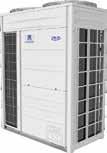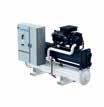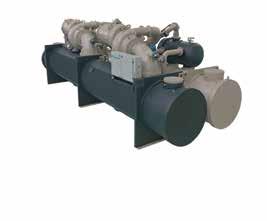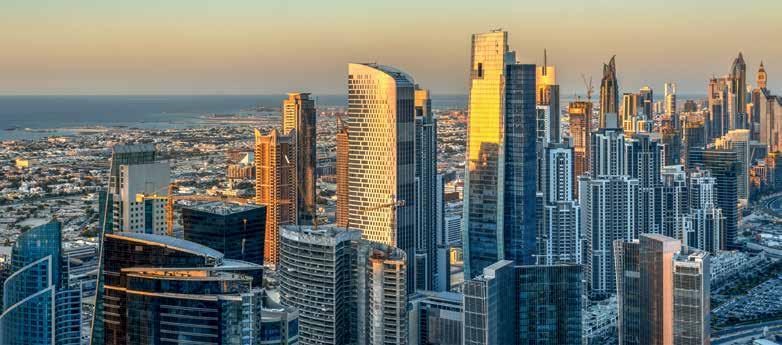






MANUFACTURERS recognize AHRI certification programs and equipment performance standards as key to achieving energy efficiency, environmental sustainability, and regulatory compliance.
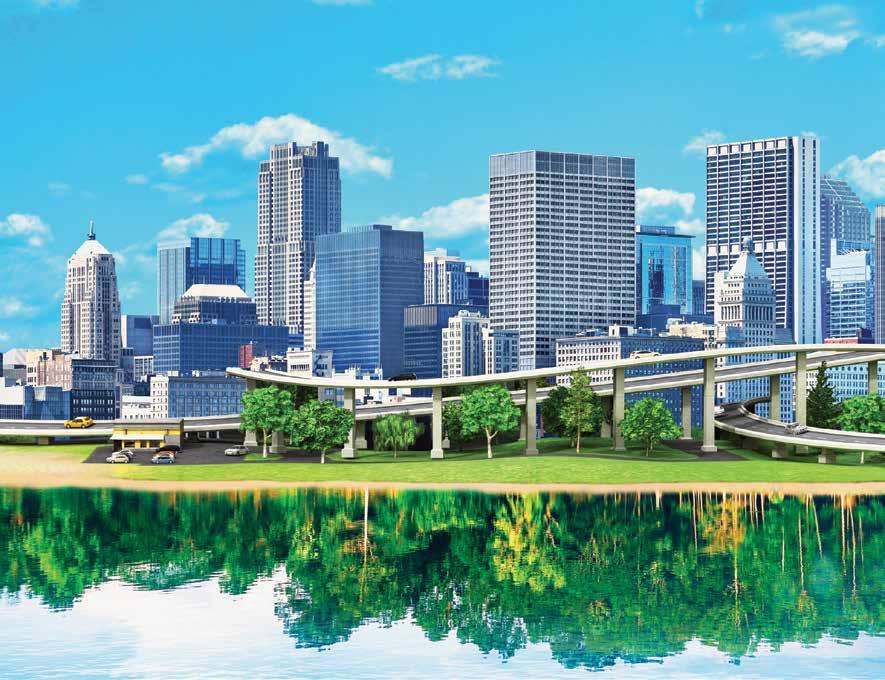
Through its extensive global network, only AHRI is positioned to provide the best solutions to help stakeholders navigate the ever-changing business environment.
At AHRI, we make life better. Let us show you how.
Learn more about AHRI online at ahrinet.org.
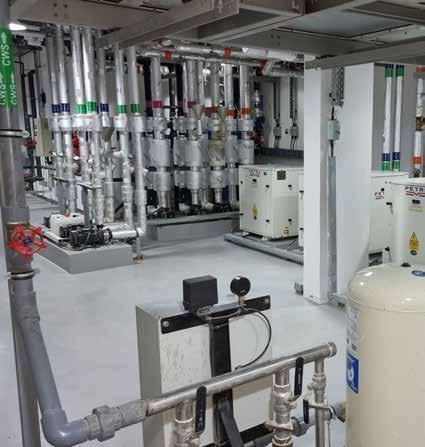
ITH this issue, we are completing 17 years of Climate Control Middle East, and it’s been quite an experience travelling what has been an undulating landscape. The time span of the magazine so far has included the highs of the real estate boom in the GCC region, the financial fallout in the wake of the collapse of Lehman Brothers, the pendulum swing in oil prices and, more recently, the menace presented by COVID-19.
The time spent chronicling the HVACR industry in the Middle East and beyond has varyingly been filled with financial uncertainty and churn for different sub-sectors, but there has been an astonishing show of optimism and resilience to keep going and hoping for a better tomorrow. Equally heartening to witness has been the determination to reinvent, where necessary, and the willingness to adapt to circumstances as well as to adopt new business approaches, new technologies.
There has been one constant, though, which largely speaking, is the unwillingness of multiple building industry stakeholders – including policymakers, master developers, building owners, consultants, contractors, and manufacturers and suppliers of HVACR equipment – to work in a collaborative spirit to lower the emission of greenhouse gases. The talk at multilateral meetings is promising and pregnant with intent, but we are still confronted with a befuddling amalgam of denial and a myopia-triggered refusal to look beyond individual commercial interests.
As highlighted by the recently concluded COP Summit in Sharm El-Sheikh, in Egypt, the unbridled emission of methane is a threat to global stability. A few years ago, much before COVID-19, I chose to speak on the Siberian Permafrost during the Climate Control Awards ceremony, of how greenhouse gas emission-triggered global warming is resulting in a thawing of the ice, which holds biodegradable matter and pathogenic organisms under its icy-white veneer. The thawing, it is feared, will release unimaginable volumes of methane gas into the atmosphere and, equally menacing, untold hitherto dormant strains of virus that could see a return to mask mandates and lockdowns in a grim battle of survival.
At the risk of sounding banal, we, as a building industry, are collectively contributing to the rise in greenhouse gas emissions, and directly impacting the Permafrost – the connection couldn’t be more obvious and significant.
There is no dearth of solutions, though; and there is a latent political will and financial feasibility. This issue contains articles that speak of viable means of plugging leaky ductwork – the claim is that there is no need to tear down ceilings for that – and of an apparently bold new approach that advocates recirculating indoor air, after taking it through a cleansing, germicidal process. Both, if the claims are validated, possibly hold opportunities for reducing power consumption and, thus, emission. And there are other technologies, other approaches out there that could join the party. Let’s not leave it too late for that.
Head Office PO Box 13700, Dubai, UAE Web: www.cpi-industry.com


Printed by: Jaguar Printing Press L.L.C
© Copyright 2022 CPI. All rights reserved. While the publishers have made every effort to ensure the accuracy of all information in this magazine, they will not be held responsible for any errors therein.


































































System safety is the easiest exercise for these power packs: Ammonia Compressor Packs (ACP) from BITZER offer maximum reliability – thanks to multiple compressors, sensors and other essential components within a single system. Their home territory: industrial ammonia refrigeration such as low and medium temperature applications in the food and beverages industry or in warehousing. And all this with high full- and part-load effi ciency and low life cycle costs. Learn more at www.bitzer.de // www.bitzer-intelligentproducts.com // mail@bitzer.ae






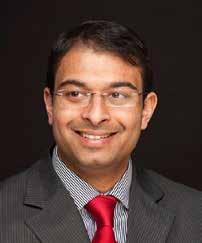
it too much of a statement to make in the present day that the world, as we know it, is unravelling? As had been evident for the past two years, starting with the coronavirus pandemic and turbocharged by the supply shocks emanating in the wake of the Russia-Ukraine conflict, what was a global economy with minor ailments has been thrown into an increasingly alarming crisis situation.
Perhaps the reader – set comfortable in the economic freedom and plain luck afforded by the safe, sterile environs of the UAE – has been rendered rather immune to the great changes that have been afoot on the international stage. The history of the past 40 years, during which Dubai turned herself from a bustling port town with lots of promise to a world-leading city with still more promise, reflects a unique period in the history of the world – of rapid globalisation, lowered transaction costs, lower finance costs and multifold decreases in the cost of international air travel, which is about to be turned on its head.
We do not yet know just how rapidly this process will take place, but we are increasingly faced with the prospect that this may happen sooner than we think. We seem to have been wading ever so slightly and barely noticeably towards a maelstrom of commercial and financial upheaval, like we have not faced in a very long time. In a manner of a few tepid steps, the ease of doing which is as shocking as it is simple, each one of the gains in globalisation, made over the course of the past 40 years, is being undone.
In announcement after announcement, interest rates have gone up: the cost of financing projects and ventures will go up. Trade tensions and the coronavirus crisis
means that shipping rates will become more expensive. Matters are compounded with the cost of relocating established supply chains into more favourable markets. The biggest elephant in the room, though, is the climate crisis, the gravity of which is becoming increasingly clear, and which is exacting ever greater costs on humanity.
There are famine-like conditions brewing in nearly a dozen countries, and natural disasters have forced societies towards greater destitution and disease.
Faced with all these variables at the same time, companies as well as countries are faced with a choice as to the path they will take to address the situation. One is the path of continued openness, free flows of the factors of production and the values created, and the unrestricted flow of capital. This has its positives as well as its negatives, especially for those who are not fully ready to compete in the hyper-competitive global economy. The other is the path of unbundling and fragmentation, where the global economy fragments into regions which do not speak to or interact with one another as frequently, and where value transfers are severely hampered through barriers and regulations.
As the IMF has pointed out in an article on their website recently, the loss to global economic growth from an increase in economic fragmentation would be equal to some 1.5% of the overall global economic growth; and this is in a global economy that is expected to grow at just about 2.7% in 2023 (IMF, November 2022). The Asia-Pacific region, whose growth has been premised to a great extent on international trade flows, would definitely be negatively affected. But the markets in the Advanced West would not be immune to the negative effects
of global fragmentation, either. Already, they are suffering from chronic inflation, brought about by monetary as well as supply-side factors, including restrictions on gas and food-grain supplies in the wake of the conflict raging between Russian and Ukraine.
The great headline in several Arabiclanguage TV news stations is as much about reports covering the state of grain shipments from Black Sea ports as it is about the conflict itself – a clear indicator of where their priorities are, as, of course, should be the case. Economic confluence over the past 40 or so many years has allowed the largest percentage of the world’s population to dramatically improve their living standards despite the almost constant outbreak of war at some corner of the world or another serving as background music during the whole period.
This poses serious questions to all stakeholders, including businesses, engineers, governments as well as ordinary people, as to how to navigate the incoming troubled seas. This is especially more so the case for companies and people engaged in the HVAC industry, given that its trajectory is directly related to the overall course of global economic growth. How are companies in the UAE and the GCC region going to prepare themselves to
steady themselves in the short and the medium term as well as further along?
The solution seems to be for the industry to stick to salient points, or as Deepak Chopra would say, “Find your Purpose”. The great technical difficulty facing the world is the question of how to provide for the energy consumption requirements of billions of humans (and animals, if you consider modern farming and animal husbandry) – with the world population hitting 8 billion officially on the 15th of November 2022 – without proceeding to render the planet uninhabitable for any life a few generations forward in the bargain. Energy efficiency is no longer a cute marketing slogan or something out there to be planned for – it has very much become front and centre of the human quest for nothing less than survival, and the actions have assumed an urgency that they never had before; and it is heart-warming to see that the world, as a whole, has opted for solidarity and
consensus on this crucial issue. The works of several distinguished scientists and thinkers, including Sougata Nandi, the author of the book, Energy Management in Real Estate: The Secrets to Success, is essential reading in this respect.
If the spirit of global cooperation and solidarity, when it comes to the issue of human-induced climate change, could be transposed to the economic arena, as well, the world, as a whole, may yet avoid the perils arising from increasing fragmentation of the global economy. It is, of course, in the nature of responsible governments to prepare for the worst, and it is in this respect that the focus of certain governments, such as but not limited to India, has been to take fragmentation in the medium-term as a certainty, as betrayed by certain statements made recently by Dr S Jaishankar, the External Affairs Minister of India. But statements such as these bring to the fore a greater truth – that
it is the power of millions of innocuous individuals that ultimately decides the course that governments will take. And here, it is, indeed, the actions of millions of talented individuals, such as the professionals who form the readership of this magazine, and who have assembled in the major economic centres of the world very often away from their land of origin, which can force governments to rethink their strategies when it comes to forging the path ahead for their economies. Globalisation succeeded not because the governments conspired it to be so; it is because the latent productive potential of hundreds of millions of ordinary people could no longer be suppressed. It will pretty much be this very principle which will put the brakes on The Great Unbundling.
CPI Industry accepts no liability for the views or opinions expressed in this column, or for the consequences of any actions taken on the basis of the information provided here.
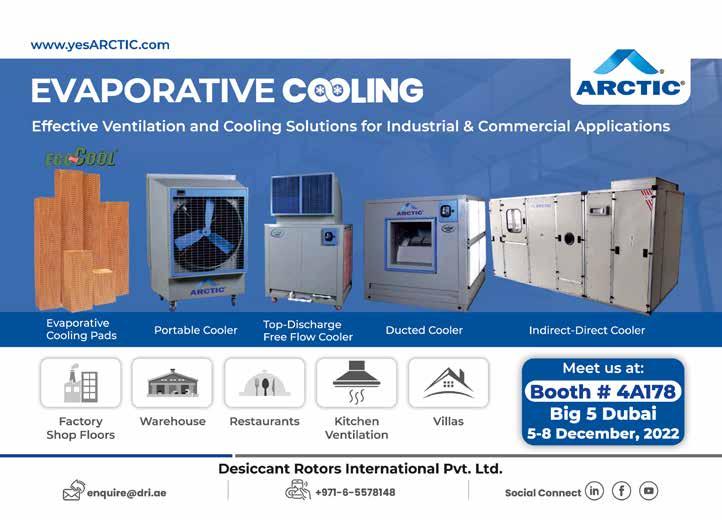
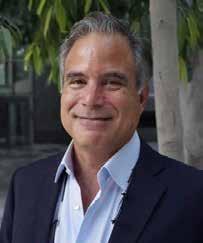
uilding Decarbonisation” and “Net Zero 2050” are on everyone’s lips in the ongoing sustainability dialogue and are shaping the mid- and long-term strategies and investments of governments as well as the private sector.
At the same time, these terms are not fully understood by many key stakeholders, who are confused by the rapidly changing sustainability jargon and goals. What are the differences and interrelationships among such terms as Net Zero 2050, NZEB, COP26, COP 27, the Paris Accord, Kigali Agreement, Green Building Codes and the various versions of ASHRAE 90.1?
How do we make sense of them, so we can define our priorities accordingly? How can each of us contribute to this worthy endeavour in the spheres of our expertise and responsibilities?
Net Zero 2050 is a key milestone agreed to in Glasgow at COP26, the yearly meeting of the Conference of the Parties (COP), as conceived in the Ambition Mechanism of the Paris Accord. Net Zero 2050 is the pledge to reduce the global
Greenhouse Gas emissions (GHGEs) to pre-industrial levels by 2060.
The International Energy Agency (IEA) estimates that the building sector produces 38% of the global GHGEs. This compares to 32% for industry and 23% for transport, with the remaining six per cent for other activities.
Building GHGEs are caused by two types of carbon – operational and embodied.
Operational Carbon (OC) constitutes the emissions released through the lifetime operation of such building systems as lighting, power, heating, ventilation, air conditioning, elevators, escalators, office equipment, home appliances and other powered loads. In 2020, Building OC is estimated at 28% of global GHGEs.
OC reduction strategies are well defined, time tested, straightforward and can consist of one or more of the following options:
1) Energy efficiency increases:
a. Building envelope adaptation and use of better thermal insulation.
b. Selection and installation of equipment with the highest efficiency available for the region.
2) Electrification:
a. Switching from fuel-fired technology to highly efficient electric options.
3) Renewable Energy: a. Installing renewable energy inherent to the building and selecting renewable source utilities, when available.
4) Smart Controls: a. Reduction of energy waste in the building.
b. Shifting of building energy loads for grid-wise energy optimisation.
The above strategies are in preparation for 2050, when plans call for 100% of the power grids to be fed from renewable energy sources. And OC reduction strategies are the same for new and existing building upgrades alike.
Embodied Carbon (EC) constitutes the emissions associated with materials and construction processes throughout the whole lifecycle of a building or infrastructure, including:
1) Construction material extraction, transport to manufacturing locations, manufacturing, transport to the job site and the construction practices used to erect buildings.
2) Emissions used in maintaining the building and, eventually, demolishing it, along with disposal of the waste, including recycling.
EC is a relatively new concept and is still evolving. Current efforts are focused on developing common global definitions, measurements and certification programmes.
EC reduction strategies often
consist of the following general recommendations:
1) Build less and reuse more, by extending the life of existing buildings and materials.
2) Build lighter and smarter with less of a given material (or floor area) to do the same work.
3) Substitute low-carbon materials for high-carbon ones.
4) Adopt life cycle assessment (LCA) programmes to quantify and balance between the operational and embodied carbon.
The various governments in the region have adopted a mix of Net 2050 and Net 2060 strategies, all of which include green building regulations, retrofit programmes and some form of financing mechanism adopted at governmental or municipal levels.
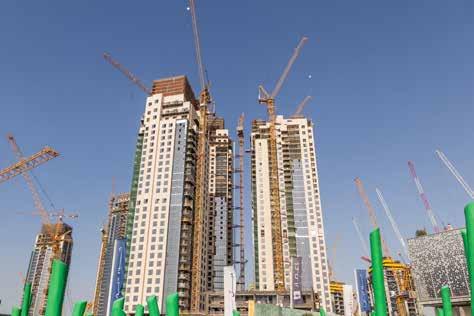
Building decarbonisation, together with a transition to renewable energy, represents the major challenges and opportunities in the region on the path to 2050. After all, the energy consumed by the existing building stock is estimated at between 70% and 80% of the national energy level, compared to a world average of 55%. It is also worth noting that OC reduction must primarily tackle the heating, ventilation, air conditioning (HVAC) electric loads, representing 6080% of building energies in the GCC region. Minimum Energy Performance Standards (MEPS) make a critical contribution to reducing greenhouse gas emissions.
Compliance with MEPS is an arduous job, as there are a multitude of regulations varying from country to country – and even at the city level, at times, including different labels and costly compliance requirements for every jurisdiction for the same products. Regulators are becoming aware that this complicated compliance path falls short in delivering energy efficiency compliance. It is a known fact – and a frustration for many – that units in the market often fail market surveillance.
Many ESCO companies tasked with the biggest challenge – retrofitting the existing building assets – promote energy savings through multi-year agreements.
Often, the contracts sold are based on a quick estimate based on building footprint and utility bills. This results in half-solutions, missing years of possible energy savings. Contractual conflicts often follow, with a loss of trust between ESCOs and clients, through which everyone loses, and the retrofit process is slowed down, if not halted altogether.
Owners and operators often run their buildings at the highest possible energy consumption without realising it. Their drive is to sublet the facilities’ maintenance to the lowest bidder with little concern for their building asset value degradation, and the significantly higher than necessary building energy consumption.
Financial institutions are waiting for the market to mature and function properly prior to providing green finance in what can become a vicious circle.
As COP goals highlight, collaboration among nations and stakeholders is a must to reach Net Zero 2050. EC and OC stakeholders must get together and agree on collaboration and a path of environmental stewardship.
Market leaders in their fields carry the responsibility to elevate the dialogue and actions of environmental stewardship. Courage is needed to stop promoting low-efficiency products and solutions and, instead, to introduce incentive schemes that encourage environmentally
responsible results. Technical and project staff will benefit from ongoing training on the latest EC and OC methods and technologies.
ESCOs and manufacturers promoting energy-efficient solutions and products are advised to adopt proven and time-tested third-party certification programmes as an assurance of performance. This is healthy for the industry and will gain the trust and confidence of the owners and encourage financial institutions to provide green financing.
A healthy and truly environmental collaboration by the industry stakeholders will encourage regulators to embrace harmonised regulations with certification and market surveillance mechanisms. End users would end up with a competitive and wide choice of highefficiency products and solutions with no low-efficiency options allowed to spoil the market and the environment.
Our choice is clear: We can choose self-motivated collaboration today as the way forward or wait for governments to lift electrical subsidies and enforce penalties to accelerate building decarbonisation. The first option puts us in control of our own destiny and makes environmental as well as economic sense.
CPI Industry accepts no liability for the views or opinions expressed in this column, or for the consequences of any actions taken on the basis of the information provided here.
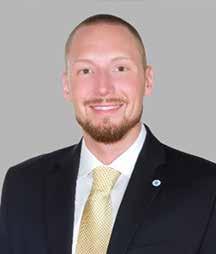
HE HVAC industry has experienced rapid changes over the past year that have pushed professionals and manufacturers to rethink how they approach sustainability, building health and workforce development. The pandemic magnified the importance of Indoor Air Quality (IAQ) both at home and within commercial buildings. The effects of climate change backed by governmental policy have accelerated the need for energy-efficient systems that can help to support aggressive sustainability goals and reduce energy costs. A waning workforce and continual supply chain disruptions are sources of ongoing pressure within the industry as product demands grow. And yet, as both market conditions and the industry itself evolves, the future of HVAC remains positive with innovation and strategic planning guiding the way.
So, what are the issues shaping the HVAC industry? And what best practices contractors and building managers ought to adopt to meet evolving industry standards?
After years of preparation, 2023 marks the launch of increased US Department of Energy (DOE) standards for residential as well as light-commercial applications. It’s critical that contractors understand which region they’re located in – as specified by the DOE – and the types of products
they can install, based on the region’s efficiency requirements. Regionality will also determine whether product compliance is based on date of installation or date of manufacture.
Heat pumps are positioned to make a significant impact as decarbonisation efforts advance. A recent commercial building Energy Efficiency Indicator Survey revealed that more than a third of respondents plan to replace fossil fuel heating equipment with heat pump technology by the end of the year, which is a seven per cent increase from 2021. [i] Hydronic heat pumps are an energy-efficient alternative that can replace boilers to help reduce carbon emissions. Within the residential market, the DOE Cold Climate Heat Pump Technology Challenge has inspired partnering manufacturers to develop technologies that can accommodate increased heating loads within colder climates. Advanced residential systems can achieve up to a 2.0 coefficient of performance (COP) or better and maintain 50-80% heating capacity in outdoor temperatures as low as five degrees now, making heat pumps a viable option for many homeowners.
However, it’s important to note that many air-source heat pump systems still need to include some form of backup or supplemental heat when building heating demands exceed capacity – when ambient outdoor temperatures drop too low to support optimal operation, for example. Supplemental gas heating may still be necessary to help maintain efficiency.
With the United States rejoining the Paris Agreement and strengthening 2030 greenhouse gas emission targets, decarbonisation, electrification and low-Global Warming Potential (GWP) refrigerant transitions are at the centre of the accelerated sustainability goals of the United States.
Homeowners and commercial building managers can both benefit from electric-based heating and cooling systems and advanced controls that enhance performance and efficiency. The Energy Efficiency Indicator Survey revealed that 62% of commercial organisations surveyed expect to increase investments in energy efficiency, renewable energy or smart building technology in 2023. In parallel, the American Home Comfort Study indicated that 60% of homeowners were willing to invest in high-efficiency systems this year if they could lower their energy consumption and the associated costs.
In both markets, advanced controls play a critical role in supporting HVAC system efficiency. For homeowners, communicating zoning systems combine the benefits of smart home technology with energy-efficient zoning. And





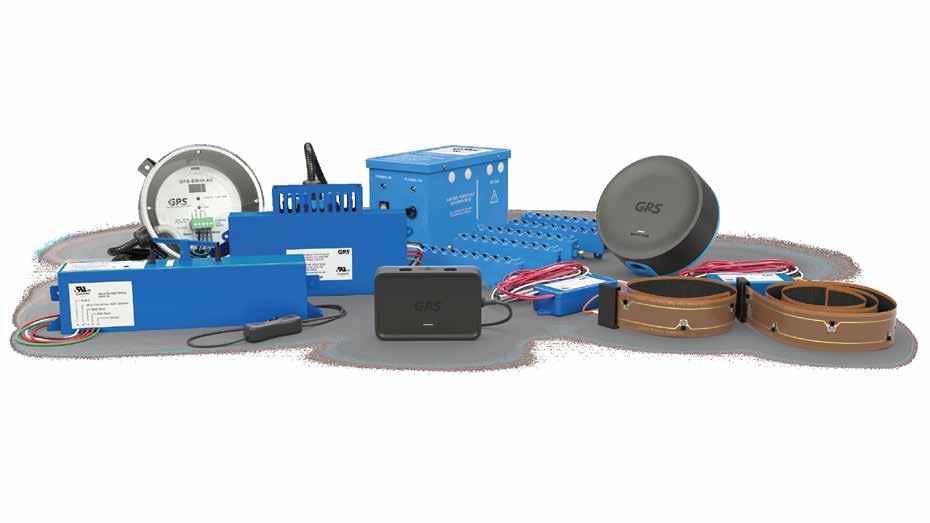







zones established throughout the home allow homeowners to reduce heating and cooling in unused rooms or make adjustments based on ambient conditions. Additionally, automated settings can be used to create preferences while away, providing superior control over the home comfort system and its energy use.
Advanced commercial building management systems that incorporate artificial intelligence (AI) provide operators with a comprehensive suite of apps to monitor and improve energy efficiency, asset performance, maintenance operations, and occupant satisfaction and wellbeing. These systems take smart building controls a step farther with realtime tracking and automatic data analytics to provide a roadmap of sustainability opportunities and metrics that help facility managers understand and communicate the impact these efforts have on building performance.
In both residential and commercial markets, the necessity for healthy IAQ is paramount, as IAQ shifts from a pandemic precaution to a method of enhancing overall wellbeing.
The 2022 American Home Comfort Study revealed homeowners were willing to spend 65% more on IAQ now than they were just a few years ago. Wellness, ventilation, IAQ, thermal health and
humidity make up half of the nine key pillars of healthy commercial buildings identified by the Harvard School of Public Health. [ii] These findings, coupled with the launch of the US Environmental Protection Agency’s (EPA) Clean Air in Buildings Challenge, make HVAC performance and healthy indoor environments more important than ever before.
Maintaining optimal space temperature and humidity levels not only provides a more comfortable indoor environment, but they also help destabilise pathogen transmission and prevent mould and mildew growth within the system and minimise its potential to spread throughout the building. Increased ventilation, advanced MERV filters, humidifiers/ dehumidifiers and ultraviolet-C systems work together as a complete system that can be applied to residential as well as commercial applications.
System controls further enhance performance by providing insights into IAQ performance. In commercial buildings, this can be advanced through smartphone apps that make building data transparently available to all occupants. Apps also allow occupants to communicate directly with facility personnel about building and room conditions like temperature, lighting and occupancy to provide superior control over personal wellbeing.
Efforts to recruit and train the next
generation of HVACR professionals continue, but there is more work required to strengthen the future of the industry. On-the-job training opportunities can help attract new contractors and develop the skills necessary for continued professional advancement. The Manufacturing Institute estimates that over two million manufacturing jobs will be unfilled by 2028 largely due to the current skills gap. HVAC manufacturers have an opportunity to play an important role in this development by investing in and providing hands-on and virtual training resources. On-site classrooms and laboratory-style training environments that include access to real HVAC systems and emulate real-world settings and environmental conditions, provide a valuable knowledge base. But additionally, virtual reality can be used to further expand expertise by simulating scenarii that are common within the field, such as servicing or installing equipment. Combining virtual reality with remote learning opportunities can help to make training and career possibilities more accessible to a wider range of potential HVAC professionals.
CPI Industry accepts no liability for the views or opinions expressed in this column, or for the consequences of any actions taken on the basis of the information provided here.


























HE pandemic revealed that Indoor Air Quality (IAQ) matters. Before COVID-19, terms like ‘ventilation effectiveness’, ‘ultraviolet’, ‘ASHRAE 62’ were known only to HVAC engineers; today, there is general awareness of the issues that underpin them.
Awareness isn’t enough, though. Climate Control Middle East magazine has already published many articles regarding the basics of IAQ best practices and the basic need to open the windows and dampers, clean the air, and to tune up our HVAC and BMS systems. However, if we want to futureproof our buildings from the next pandemic, we need to implement ongoing monitoring of IAQ to ensure we maintain our building health.
In 2020, I proposed what I then called ‘building tracing’, in response to the government-run ‘contact tracing’ programme. My point was that specific buildings with poor IAQ could also qualify as super-spreaders of the virus. Now that we are beyond the acute phase of the pandemic, we need to incorporate building tracing into our standard practice through continuous IAQ monitoring.
The metrics for good IAQ are straightforward: Ensure adequate ventilation per well-established building codes, ensure good filtration and ensure CO2 concentrations are not rising quickly with occupancy. Add a properly installed and commissioned air-cleaning device, and the building space is now above code and minimising the ability of viruses to propagate.
However, for many buildings, the existing IAQ is sub-optimal at best or
non-existent in too many cases. Lack of ventilation, sub-optimal construction or deferred maintenance are the most common reasons for poor IAQ, but since air is invisible, most people have no idea when they are walking into a space with good or poor IAQ.
With building tracing – that is, continuous monitoring – owners would be required to report the IAQ of the space, which would inform the occupant of the IAQ conditions before they enter. By providing information in a transparent manner, the spaces with sub-optimal IAQ would be quickly identified, which would force changes to improve the IAQ. Moving forward, when issues occur, building management would have the tools necessary to identify the problem in a timely manner, thus allowing the opportunity to fix the problem and protect the building occupants.
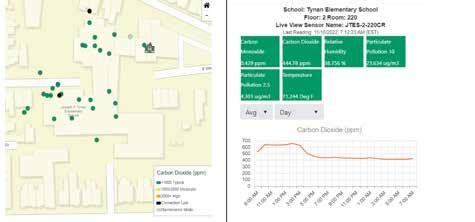
With the Internet of Things, we have well-established and cost-

effective infrastructure that can provide real-time feedback, data tracking, and reporting to anyone with an IT connection.
In addition to help mitigate viral spread, building monitoring systems can help mitigate issues with mould, allergies and other antagonists to human health. When used correctly, we can reduce our carbon footprint by allowing HVAC systems to reduce the provision of ventilated air, which is heated and cooled, when conditions permit.
Doing it the Boston way: Below are photos of screenshots, which are readily available to all stakeholders, including administration staff, operations and maintenance personnel, regulators and, most important, teachers, parents and students
With building tracing, spaces with sub-optimal IAQ would be red flagged, persuading occupants to think about leaving or staying; nothing could be a more powerful incentive for building owners to take remedial action, says Jeremy McDonald
General Gas Kryon® Non-Refillable Cylinders are manufactured in full compliance with DOT 39 standards. Each cylinder is packed in high-strength cardboard box, to make its transport, handling and storage easier.
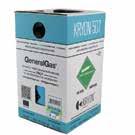
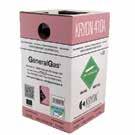
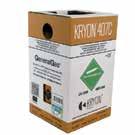
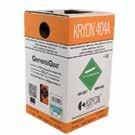

Kryon® cylinders are filled by GeneralGas with the use of a patented system called "High Purity System"; this method makes it possible to reach very high quality standards, as required by the leading R&AC OEMs.


Gas purity is equal or better than required by international standards AHRI 700-2017, including gas humidity which is equal to 10 ppm only.



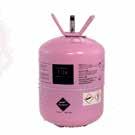

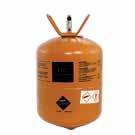

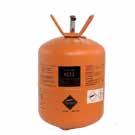




The process has started Already, there are green shoots of continuous building monitoring sprouting up in various locales. Boston Public Schools, in Massachusetts, for example, recently installed IAQ sensors in all classrooms and areas of high concern – that is, nurse’s office, main office, etc. The sensors report data on a real-time basis, including:
• Carbon dioxide
• Carbon monoxide
• Airborne particulates
• Temperature
• Relative Humidity
The stakeholder in Boston can go to a readily available platform and drill down to the data of interest. In my view, here are the fundamentals of what a data platform should entail:
• Software shall be open-dashboard format and easily accessible – that is, mobile app.
• Data should be reportable to a central server but also locally stored on a data logger.
• Drill-down capabilities. Dashboard shall start at district level, then buildings, then spaces.
• Data should be easily downloadable. ASCI II and Excel format are the standards. This easy download capability empowers the user to evaluate data as they see fit, which will improve buy-in from stakeholders.
• Alarm capability. For critical variables, such as rate of change for CO or CO2 threshold, an alarm should be sent to facility operation personnel. This gives the O&M personnel an opportunity to address the issue, which again, gives stakeholders confidence, since it is clear someone is actively watching the IAQ performance.
• Aggregate reporting. Real-time reporting, monthly and annual reporting are all critical for stakeholders to digest information for the operation. Based on comparison to well-defined metrics, decision makers can quickly determine if they are on track for IAQ performance.
• For spaces that habitually perform poorly, the root cause needs to be traced and corrected.
Carbon dioxide
Primary indication of ventilation. Persistent levels above wellestablished criteria (1,000ppm is criteria stated by several school districts) indicate that the space may be under-ventilated.
Carbon monoxide
Airborne particulates
Temperature
Relative Humidity
Volatile Organic Compounds
Ozone
Life safety alarm. This is typically inexpensive for data-capturing systems but can be critical for combustion issues.
Particulates should be measured at multiple levels, with 2.5 um – that is, smallest measurable particle – as the most important particle. Particle count irregularities may indicate that air-cleaning devices or HVAC filtration systems may have to be checked.
Typical comfort variable. Good IAQ cannot sacrifice basic comfort, or it won’t be sustainable.
RH is a key indication of good RH. Although buildings often don’t have the capability of addressing either low or high RH – ASHRAE indicates 40-60% RH is optimal – the trending can indicate time periods for extra vigilance for viral spread.
High VOC concentration can have deleterious health effects.
For clients who are using an air-cleaning technology that may emit ozone, which is a health concern, an ozone monitor can ensure ozone is not present.

When parents in a K-12 environment, like the Boston School District, have access to open and transparent data for their loved ones, effective change will be realised. But even there, I have suggestions for improvement. Above is a listing of key variables and the reason for their importance. Variables highlighted in Green are part of the BSD dashboard, while those in red I recommend for future dashboards.
We already have the technology and the knowledge to make continuous building monitoring a reality. What we need is the political will to make this a reality. Here in the United States, I speculate that if put to the general public, an overwhelming majority of people would support this initiative.
So, what is stopping us? In my conversations with elected and public health officials, two issues consistently come up: The first is the perceived cost and the other is the fear of the unknown.
Based on my experience, a cost of USD 2-4/square foot is reasonable for a continuous building monitoring system. On the other hand, what is the cost of another pandemic? Certainly, we as a society cannot afford the health effects and economic shutdown we experienced in 2020. Viewed in this context, USD24/square foot seems like a reasonable investment.
The second issue is the fear of the unknown. In my conversations with regulators and government officials, it is well known that several of our buildings have sub-standard IAQ, with many not meeting local building code. To be candid, knowing there is a problem but looking the other way is irresponsible. Again, if we know that IAQ was a major vector in the spread of COVID-19, looking the other way on sub-standard IAQ is irresponsible, and our public deserves better.
Government, this is a call to action to be courageous. I am sure the Boston School District thought about the risk of being transparent about their IAQ. However, if you are confident in your systems, people and ability to solve problems, then there is nothing to be afraid of.
CPI Industry accepts no liability for the views or opinions expressed in this column, or for the consequences of any actions taken on the basis of the information provided here.
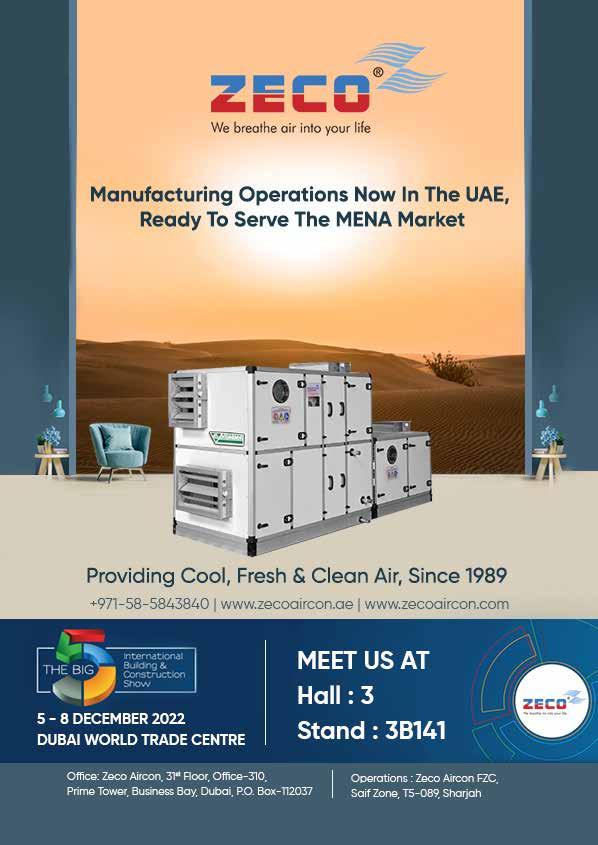
George Berbari, CEO, DC PRO Engineering, lives in what he calls a near-zeroenergy villa. It is a house he designed and supervised the construction of, to ensure it stood firmly on the pillars of sustainable development principles. Surendar Balakrishnan, Editor, Climate Control Middle East, has the story…
2018, when George Berbari, CEO, DC PRO Engineering, decided to build his house, he sat down and defined a set of broad objectives. One of them was to minimise energy and water use to the lowest level by using the latest commercially feasible technologies. Another was to offset the energy used by the building by generating power onsite through dual-purpose solar PV structures, such as carport and gazebo, to optimise the use of space and to preserve the aesthetics. A third objective was cost control – of having a simple payback period of fewer than five
years for incremental investment through energy and water savings. A fourth objective was to create a knowledge base available to the public that would produce the best-in-class green design.
The result is what Berbari describes as his near-zero villa, in the Dubai Hills development. The house has a total gross floor area of 1,510.7 square metres, plus a 70-square-metre swimming pool; a total conditioned area of 991.6 square metres; and a connected electrical load of 78.94 kW (52.3 W/m2 gross area; 79 W/m2 AC area). The power consumption and solar PV generation amount to 75,000 kWh/
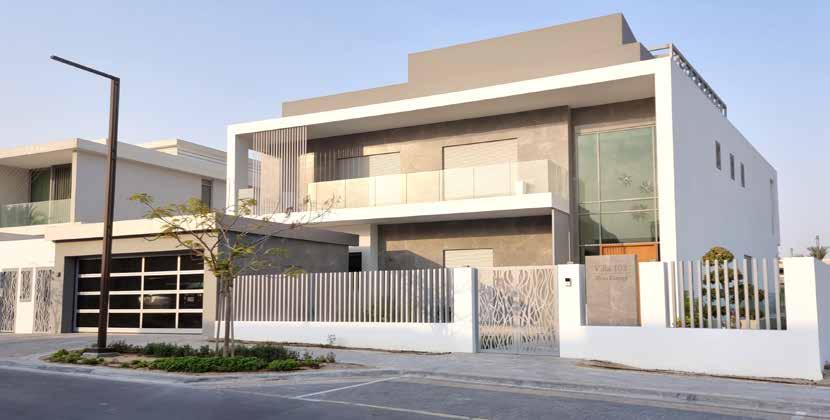
I have known George Berbari, the CEO of DC PRO Engineering, for 17 years, and I was not surprised when he showed me around his newly built villa, which I find it apt to describe as a house that stands above a plantroom, hence the heading. What else would come to mind when you see a basement occupied by chillers, including for redundancy, pumps, controls and dashboard displaying metrics of energy and water performance?
year, or per AC area of 75 kWh/m2/year. The villa has an installed AC capacity of 17 tons (59.8kW) and an actual peak of 12.4 tons (43.6 kW), or per AC area of 80 m2/ ton (43.9 W/m2).
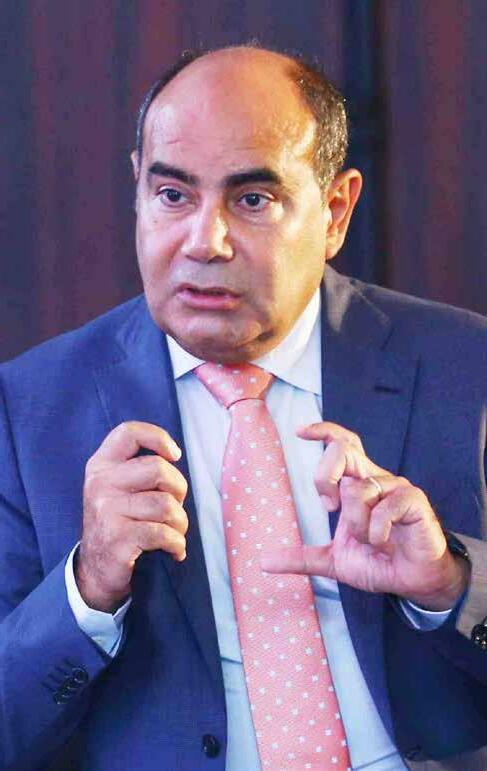
Among salient features is a clean roof concept that has a solar PV gazebo, highreflectance roof materials, and peripheral roof planters with water-saving, low-height plants that are irrigated by recycled grey water.
Another salient feature is the orientation of the building. Due to the land orientation and Dubai Hills master plan, the villa’s main entrance faces north-east, whereas the rear side faces south-west. The glazing on the south-west is reduced to a minimum, and the first-floor balcony and ground floor are overhung to provide shading. All walls and hardscape have high-reflectance index.
Speaking of glazing, the villa’s design optimises the envelope. Typically, glazing in Dubai transmits over 12 times the heat compared to insulated walls. The villa uses standard double-glazing glass but has a low glazing-to-wall ratio (less than 20%). It uses neutral glass with light transmission over 70% to maximise daylight. It also has in place insulated rolling shutters to close during unoccupied hours, which reduces up to 80% the losses through glazing during unoccupied hours.
Yet another salient feature of the villa is the use of insulated walls and roof. The use of 300mm autoclave aerated blocks wall followed by 30mm-thick rockwool fire-rated insulation produces a U Value of 0.3 W/m.K, compared to 0.57 W/m.K – the current Dubai regulation. Further, the villa has combo roof and balconies insulation and waterproofing using 70mm-thick sprayed polyurethane, which is covered by a 50mm-thick screed.
All these features support the air conditioning system of the villa, the highlight of which is a geothermal heat rejection system, which Berbari is particularly happy to point out. “Dubai is blessed with a high-water table with a relatively low water temperature of 32 degrees C, and has developed low-cost, eight-inch manual well-drilling techniques, which are resulting in water make up for the cooling tower of 2m3/day,” he says. In addition, the heat rejection of the chillers and the geothermal water are used simultaneously to heat the swimming pool
The hydronic radiant systems in the villa are air-and-water systems that separate the task of ventilation and thermal space conditioning by using primary air distribution to fulfill the ventilation requirements and by using secondary water distribution to thermally cool the space
in winter by more than 700 kW of heat daily using less than 30 kWh of electricity for the pump and saving more than 150 kWh a day, in the event a typical air-cooled heat pump is utilised.

The villa’s geothermal cooling system is an open-loop system for water chiller heat rejection. The open-loop system comprises two wells – one for intake, with a submerged pump at the bottom, and another well to return the water to the same aquifer. It requires to reach the groundwater to have the highest heat rejection capacity. “In the Gulf, the depth can vary from as shallow as 10 metres to as deep as 20 metres,” Berbari says. The six-inch borehole can have up to 15 tons capacity, and larger boreholes of 10 inches or 12 inches have been used
with up to 400 tons of cooling capacity. Berbari says the performance of the geothermal system is based on data –geothermal water temperature versus depth – collected over a year. “The data has indicated temperature consistency all year round,” he says.

The villa has a cooling tower, which is used as a backup, in the event of maintenance of the well or the submersible pump, as well as to provide thermal relief, in the event of raised underground water temperature due to prolonged operation.

The air conditioning system also includes radiant cooling, which operates with higher chilled water temperature (14 degrees C), reducing compressor lift and power, resulting in power savings of 2kW.
The hydronic radiant systems in the villa are air-and-water systems that separate the task of ventilation and thermal space conditioning by using primary air distribution to fulfill the ventilation requirements and by using secondary water distribution to thermally cool the space – sensible heat.
The radiant cooling systems reduce the amount of air transported through the villa significantly, particularly in bedrooms, where there is no air circulation at all; ventilation is provided by treated outside air systems as well as recirculated air to help in dehumidification in central areas of each flat of the villa. The radiant cooling system provides half the cooling requirement of the villa, using chilled water (from 14 degrees C to 19 degrees C) as the transport medium.
The villa also uses ceiling, wall and floor radiant cooling, which provides cold cavelike comfort, better temperature control and zoning. Traditional AC ductworks dictate the false ceiling height – typically 50-70 cm – while radiant cooling height is limited to 15cm. Further, radiant cooling eliminates 100-200 watts/ton of fan motor energy, which is needed in the case of a typical AC system.
Other features of the air conditioning system are fresh air and exhaust air heat recovery, and dehumidification. The villa has an ultra-high-efficiency heat wheel (>80%) with dedicated chilled water loop for dehumidification, resulting in power savings of 2kW.
The air conditioning system provides free swimming pool heating and cooling. The villa uses the chiller condenser heat rejection or geothermal energy for heating
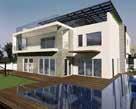
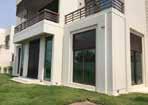
during winter, and free evaporative cooling from the cooling tower during summer. It has the option of chilled water swimming pool cooling, which to date, was needed only for four days during the summer, where it utilised less than 28 ton-hours (100 kWh) a day.
Further, it uses hot water heat pump and heat trace for piping network to optimise domestic hot water generation energy. Inside the house, the kitchen has a gas oven, as opposed to an electrical cooker. The oven provides 80% primary energy efficiency, as compared to the 35% for the cooker.
The villa’s air conditioning system also includes home automation and PLC industrial controls, inclusive of sensors, electric, BTU and water sub-metering to control and monitor power and water usage.
To realise the near-zero-energy (lowcarbon) dream and achieve minimal electricity bills, the villa exports solar PV power to offset most of the imported
grid power. As mentioned earlier, the optimised villa results in minimal power consumption – estimated at 82,000 kWh – and a situation of offsetting by PV power generation. The villa contains 142 solar PV dual-glass panels – 77 for the roof solar gazebo, 15 for the garden solar gazebo, 28 for the solar carport and 22 on the flat top roof. Each PV panel generates 275 watts, or 54,000 kWh/year, which is sufficient to cover 70% of the home electricity consumption.
Other innovations in the villa include the use of a packaged, pre-insulated modulating control system for all FCUs and radiant cooling distributors, and the elimination of P-trap drainage and replacing it with an innovative M-Valve.

The villa posed architectural challenges, given the objective of incorporating elements that would contribute to the near-zero-energy goal. The first challenge was designing a modern villa with the least glass opening possible – a glass-to-wall ratio of
around 18.2%. The second challenge was integrating the solar panels in the design while keeping the elegant look of the villa intact. The third challenge had to do with materials selection; considering the heat in the summer, and the rain in the winter, it was essential to arrive at a mix involving ceramic tile cladding, paint and low-E glass.
In the end, Berbari says, it was worth it, because the villa surpassed the requirements of all green certifications. For instance, he says, LEED Platinum requires >80 points and >2,000 kWh of renewable energy produced per year. The villa, he says, is achieving 85 points and is generating 37,500 kWh of renewable energy per year. Likewise, it meets Dubai’s Sa’fat Platinum conditions, which require 10% of renewable energy, whereas the villa achieves 100% renewable energy. Further, it more than meets Estidama 5 pearls requirement of exceeding 1,000 kWh/year of renewable energy.
Perhaps, just perhaps, it makes sense to have a villa atop a plantroom.
Here, George Berbari presents the one-year data compiled from two summers at his near-zero-energy villa…
OVING into a high-tech villa is not just bliss but also amazing grace, combined with hard work of adjusting or fixing errors or unforeseen circumstances.
The one-year data for the 1,000-square-metre air conditioned space and 500 square metres of outdoor terraced areas and balconies and 70 square metres of the outdoor pool is now compiled.
It is worth noting that the entire 1,000 square metres of indoor space was kept between 21 degrees C and 22.5 degrees C all year round; and the humidity was kept in the 6065% range. The villa had hot water available all year round and reached the farthest tap within 10 seconds.
The motorised, insulated rolling shutters, on coming down, provided outdoor noise damping and full light blackout; when combined with indoor noise-free radiant cooling, they provided us with the ultimate sleeping experience. The living areas felt like cold caves with the ceiling, walls, and floor chilled, while all central areas were provided with treated fresh air and additional dehumidification fan-coil units to assist in humidity control. The entire house felt pleasant with no or very little variation between rooms and spaces.
In addition, the swimming pool was heated almost from the beginning of November 2021 till the end of April 2022 through a combination of geothermal heat (70%) and heat rejected from the water-cooled chillers. It was cooled for most summer months by free evaporative cooling through a cooling tower; we had to cool it with chilled water – taking less than 50 ton-hours (175 kWh) per day only for four days. It is worth noting that
swimming pools in the UAE are dominated by heating energy. We had to heat it by 700 kWh on the coldest days, and the swimming pool temperature dropped to around 27 degrees C on the coldest windy day.
The greywater recycling and rainwater harvesting, artificial turf and geothermal cooling combined to offer over 55% water savings. The average water consumption was 2.7m3/day, whereas the swimming pool makeup averaged 650 litres/day, or 9.3mm losses per day (24.1%), and the irrigation and WC makeup consumed 1.36m3/day, out of which 0.3m3/day was recycled water and the balance 1.06m3/ day (39.3%) was Municipal potable water. The cooling tower makeup averaged 310 litres/day (11.4%), and the domestic water was barely 680 litres/day for an average of five occupants, out of which the hot water constituted 152 litres/day.
The 280m2 artificial turf, if replaced with natural turf grass, would have added 2.8m3/day on its own.
The hot water heat pumps worked amazingly well, delivering year-round 55 degrees C hot water with one-hour night temperature boosting by an electric heater for legionella control. The entire heat pump’s annual production was 1,184 kWh thermal, and the electric consumption of 313.4 kWh per year. For every kW of energy, the heat pump delivered 3.78 kW of thermal energy and 2.78 kW of cooling energy to cool and dehumidify the MEP room. Hence, for every 1 kW of electricity, the villar received 6.56 KW of thermal energy, making it one of the most efficient applications of heat pumps in the world.
To put it in context, typically, these units are installed or ducted outdoors in Europe, delivering barely 2 kW of heat for each kW of power; and the cooling energy is wasted.
In addition to the 313.4 kWh/year heat pump consumption, the single pipe heat tracing that maintains the hot water in the
pipe consumed an estimated 1,500 kWh/ year (0.171 kW) of electricity. Although that sounds high, when compared to the heat pump itself, an alternative circulating pump would have consumed 0.25 kW per hour, or 2,200 kWh, and the thermal losses from the return pipe would have added another 1,000 kWh of heat loss. The average winter temperature lift was 21 degrees C, whereas the average summer temperature lift was 15 degrees C.
Intentionally, I have kept the interesting data to the end. The air conditioning system operated 40% as sensible radiant cooling, with an independent chilled water system operating at a supply of 14 degrees C. The balance 60% was done through dehumidification and cooling system, with another independent chilled water system operating at a supply of six degrees C. The radiant cooling was expected to work more; however, the stubborn high humidity in Dubai forced the six degrees C system to operate extensively – more than originally anticipated.
That said, the peak load was recorded on July 4, just before my family and I left the house on July 5 for a summer vacation, where the peak cooling combined load was merely 11.65 tons, and the entire day was 212 ton-hours, or 18.2 equivalent full load hours (FLH). This made the villa the most efficient unit of housing in a tropically hot and humid climate, where the performance exceeded the 80m2/ton (44 W/m2) mark. When we chilled the swimming pool, the peak load reached 17 tons. The annual cooling energy was slightly above 40,000 tonhours/year or 3,435 FLH/year.
The above are unprecedented numbers; however, the efficiency was slightly worse than the selection – the anticipated and annual combined chiller plants’ efficiency was under 0.90 kW/ton, whereas the actual for total cooling energy was 1.186 kW/ton, with the radiant cooling
system (14 degrees C) averaging 1.158 kW/ton, and the chilled water system (six degrees C) averaging 1.205 kW/ton, taking into account upper adjustment of electric meter inaccuracy to reflect the actual worst-case scenario.
The fresh air fans consumed 2,232 kWh/year or 0.092 kW/ton, and the operating six FCUs consumed 3,112 kWh/ year, or 0.128 kW/ton, which meant the total chilled water system consumption was 1.425 kW/ton, inclusive of the air side, and the radiant cooling system proved to be one of the world’s most comfortable ACs, and one of the most efficient, offering 16.7% energy saving compared to a chilled water system operating at similar conditions.
The variance in the chiller plants’ performance was mainly due to three reasons:
• The chiller manufacturer’s deviation from selected data by more than 20%, as these small, water-cooled chillers are rare and mostly tailormade and their performance is not certified by a credible authority
• Higher than expected pumping energy, and operation at a higher temperature of geothermal wells in summer, and due to heating requirement of the swimming pool in winter.
• All centralised AC systems, such as District Cooling, chilled water plants and VRF systems, suffer from parasitic partial load
There is a potential saving with relation to the chiller plant – of 7,000 kWh per year with better chiller design and operation optimisation.
The entire villa had one of the lowest power consumption profiles of an allelectric residential villa in tropically hot and humid climate – slightly lower than 75,000 kWh per year, or 75/kWh/m2/year, based on an air-conditioned space of 1,000 square metres and excluding the impact of 500 square metres of outdoor space and a 70-square-metre swimming pool; and from that, 33,000 kWh of solar-produced PV power needs to be deducted, resulting in a net imported consumption from
DEWA of 42,000 kWh/year.
A typical villa in Dubai averages 150kWh/m2/year, or 150,000 kWh/ year of power consumption for indoor equipment and another 35,000 kWh for swimming pool circulation pump, swimming pool heat pump and outdoor lighting, totalling 185,000 kWh/year and costing around AED 85,000/year, in addition to 6m3/day of water, with natural turf costing an estimated AED 25,000/year, or a total of AED 110,000/year for electricity and water. The near-zeroenergy villa delivered a low cost of utility (electricity and water) of AED 25,740/year, or an annual saving of AED 84,260/year. And in terms of net electricity used, it saved 143,000 kW/ year (77.3%); and once the balance solar PV is installed, it will save 159,325 kWh/year (86.1%), when compared to typical villas.
The current 25.85 kW horizontally installed solar PV produced around 33,000 kWh (1,277 FLH/year), with one-time monthly cleaning, as compared to the 35,600 kWh simulated (actual produced power is seven per cent less than projected) and an expected loss of around five per cent for flat horizontal panels as compared to the south-facing 23 degrees inclined installation. The 1,400-1,500 FLH/year projected solar output often talked about is overstated and is difficult to achieve in the field. The generated solar PV power in the villa constituted around 45% of the total power consumption
I am planning the addition of 12.79 kW solar PV for installation before year end, which would add around 16,325 kWh of solar PV-produced power, taking the villa’s production to around 49,325 kWh/year or 65.8% of the power consumed. The additional solar PV area was authorised by exceptional approval, allowing the use of 50% of the roof area for an elevated solar gazebo in the interest of scientific research.
The near-zero-energy villa has 40 points of electric measurement, seven points of thermal energy or BTU meters and seven points of water meters, and all are reported through SCADA. The accuracy of electric measurement is the one where the villa had around 11% variance compared to DEWA meter, while the thermal energy and water consumption were pretty accurate, with less than two per cent error.
The villa’s highest-to-lowest consumption as a percentage of the total 75,000 kWh/year was as
Max
back in 2001 that leaky ductwork is an energy hog that is hidden from view. He spoke of billions in lost energy leaking out of home heating and cooling ducts. In California alone, he said, ducting systems typically leak 20-40% of the state’s heating and cooling energy, and claimed that state-wide, the potential savings from improving ducts is between one and two gigawatts (GW) of electricity alone. Some years ago, ASHRAE said in its Handbook that 75% of commercial buildings in the US suffer from 10-25% leakage. In Europe, at the time, it was estimated to be between 20% and 25%, with similar numbers emerging from some other countries. Could I ask you to elaborate on the gravity of the problem in the present time?
Amit Gupta: Sherman has been doing research for 20-plus years. The US Department of Energy has also done research. The way US homes are constructed is that they have air ducts. Leaking air ducts in US homes is the number one reason for energy wastage in US homes. Based on 10-year-old data from a McKenzie study, it cost 540 trillion BTUs every year because of leaking air ducts. It is a big number. This is only in US homes, not in commercial buildings.
The way to look at the problem is
that building codes have gotten better over time, the importance of ducts has gotten better, engineers are more aware of the issue. Even building codes have evolved quite a bit, from 30, 40, 50 years ago, and all these buildings which have been constructed up to now were done with little to no regard for leaking air ducts. In fact, if you go back and track how ASHRAE standards have evolved, we can literally see where we started paying attention to air ducts. And then, the ducts have become part of the buildings, and even though you might replace chillers, your air-handlers and make the system more efficient, you cannot do anything about air ducts, and that is where we come in, because we have the solution that can fix air ducts in a building.
If you look at the problem, it is big. If you go to any high-rise hotel and take a shower, and if the ventilation shafts are not working properly, then the whole room will be filled with steam, right? And that would create problems of mould. That would create problems of the faster wear and tear of the carpets, faster wear and tear of the building material, and then when you try to fix it, what do you do? You try to speed up the fans for the ventilation, right? And when you do that, you are sucking more and more conditioned air out of the building to get enough ventilation in the
bathroom, and that is a huge energy penalty, right? So, IAQ issues and energy penalty – those are the two really big issues that leaking air ducts are causing.
The idea of impact of leaking air ducts can be applied to different types of buildings. In hospitals, there are crosscontamination issues and pressurisation issues. For example, if you want to keep operation theatres in positive pressure – and you are only supplying filtered air into it, so that nothing comes in and so you can keep the infection rate down –with leaking airduct that is very difficult to do. If someone were able to do that, they would have to spend a lot of energy to get there.
Sherman also said that no single efficiency improvement has equivalent savings potential. Why aren’t we sealing our ducts with a greater sense of purpose and urgency to mitigate climate change and, perhaps a greater motivator, to lower Total Cost of Ownership?
Gupta: I completely agree with Sherman. There are very few measures you can do in buildings that can have the trifecta effect of comfort, productivity and energy savings; nothing else can do that.
The real question you have to ask is, ‘Why aren’t we doing everywhere?’ Well, it is a bit of a challenge when
it comes to improving buildings – the investment vehicles do not exist. It is not [perceived as] urgent. For example, if you have water leaks, would you fix it? Sure! Why? Because the damage the water leak causes is immediate, but the damage caused by air leaks is not urgent – it is a slow bleed of comfort. You get used to living in a building that is not 100% comfortable. That becomes the newnormal for occupants. They don’t know anything can be better. That’s the biggest challenge. But as the awareness grows, I have no doubt that we will become the new lighting. People don’t even think about going to LED lights anymore; it’s a natural upgrade for all buildings. We are already becoming that in the US, as we promote this solution and as we make more and more people aware of it.
Still with Sherman, he said the potential savings from sealing residential ducts in California alone adds up to USD 1-2 billion a year. This was in 2001. Is that a fact?
Gupta: Let’s assume that you have 100 million homes in the US and that US energy bills, on an average, come to USD 3,000 a year in a big or small home, if you average it all out. Further, let’s say 50% of the energy goes into heating and cooling, and now we are arriving at USD 1,500 for heating and cooling a year. If 25% is

wasted, it equals USD 375 per home per year. And if that is multiplied with 100 million, it is not very odd to arrive at a number which is in the ballpark of USD 40 billion of impact for leaking air ducts.
Do you have figures on what percentage of valuable thermal energy is escaping from leaky ductwork, globally speaking? Would you know what is the average loss in the Middle East? And what are the potential savings we are staring at?
Gupta: We have channel partners in 29 countries. We do have lot of data.
Vilas Bakshi: I can talk about the Middle East, because we have been involved with a lot of projects, we have conducted lot of demos. The minimum leak we have seen is 20%, and on the higher side, we have seen 45%. Now different projects are of different sizes and with different capacities, but if I have to put an average, I would say 30%.
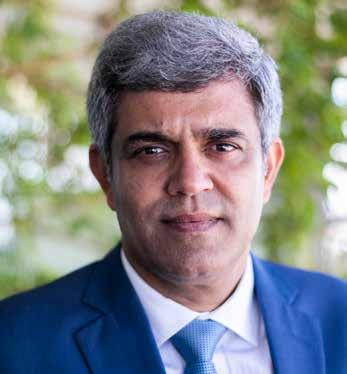
Where do you see this problem most? Is it in New Construction or is it the case with Existing Buildings? Also, does the problem increase as buildings age?
Bakshi: Unfortunately, most of the projects we have done in the Middle East are New Buildings; about 20% of the projects here are Existing Buildings. And
you are absolutely right – the leakage increases as buildings age, due to vibration and gasket wear out. I have data or test reports of 45% leakage in Existing Buildings.
Gupta: Globally, we have not done a comprehensive study, but numbers are similar ballpark. There are three reasons for leaking ducts. One is that the building codes require buildings to be tested, and if they are not tested, it depends on the construction quality. Secondly, the technology is different between the Middle East and India, say. By that, I mean the way the ducts are made. And thirdly, there is the quality of labour, and that is what makes little more difference. Sheet metal workers in Germany are well trained, so their quality is significantly different from those in the Middle East.
Fixing the problem assumes significance, considering that it is not just about high energy loss, translating to billions and billions of dollars but also Sick Building Syndrome and reduced performance of HVAC equipment. What’s stopping policymakers and building owners from achieving greater airduct tightness in buildings?
Gupta: Awareness among policymakers is improving. The Biden Administration in the US has passed the Inflation Reduction
Act. It is approximately USD 390 billion assigned for the Act. And we were able to influence that Federal Act with our policy work and government affairs initiative. There is a specific clause in that Act for air sealing. So, US homeowners now are able to take tax credits for sealing of air leakages, and that is a huge benefit. They can take up to USD 600 every year for reducing air leakage. It’s just an example of policy makers catching up on the reality of the situation. Not only that, but we also have to make the policy makers aware that the solutions do exist. Because if there is no solution, they are going to say: ‘Well, who is going to break their buildings? Who is going to go above their ceiling? Nobody is going to fix it, so it is impossible to fix it.’ If they believe that, they are not going to put effort into fixing it. There have to be practical solutions to fix it, and that is changing. We are doing work, and Vilas is doing work talking to government officials in the UAE and making them more and more aware.
if the competition is going to eat up their business, they are trying to do everything to avoid that. So, that was one of the roadblocks.
In New Construction, the challenge was that the cost of doing that was extremely high. Imagine, you have to go and physically put enormous amount of work to fill every joint and, then, test it and then go back and see where it is leaking and then go seal it again. Right, so that’s very difficult for somebody to do. So, those were two roadblocks up till now.
Bakshi: I have to add one more. From the perspective of the Middle East, there is unanimous agreement that HVAC systems are overdesigned to capacity. That also does not make you realise the leakage issue, because suppose you are designing 30-40% over the requirement, and there is a 30% leakage, then it gets covered. So, this is also one of the roadblocks because of lack of awareness.
installing the duct work, they can seal it with that much of ease. And that’s what we are working on. We have now almost 43 engineers working on innovation, improving the technology, making it easier to use, making it faster to use, making it smaller and affordable.
What is the benchmark when you say affordable? What is the current technology costing?
What was before was just doing it by hand – the labour hours it was taking was the benchmark. And if you see that has only that much of efficacy. If the duct work is shoved right against the ceiling and right against the wall, you can’t access it to make sure it is leakproof. That was the benchmark, to begin with. Our technology, when we launched in 2003 for commercial buildings, that today has become almost 700% factor. So, even with our technology, what took somebody a day to do, now they can do in an hour and a half.
Gupta: The biggest roadblock was that there was no solution that existed. People were doing the best they could in the US. In the US, there are two organisations that have governance around specification on ductwork – ASHRAE and SMACNA (Sheet Metal and Air Conditioning Contractors’ National Association), and Eli Howard, who was Technical Director with SMACNA, we have known him very well, and we have worked with him very well, and his main roadblock was specifying higher testing for ductwork, and he very simply said the cost for doing ductwork is going to be so high that it would be prohibitive for them to make it mandatory for every ductwork. And he was afraid that if the cost becomes very high, the building owners would start choosing duct-free splits, where there would be no ductwork. And if that happens, there basically would be no need for SMACNA, which is the primary trade association for sheet metal ductwork, right? Because these 10s of 1,000s of sheet metal contractors, they pay into that association. I would say incentives were lined in a manner that it prevented them from making the ductwork requirement very robust. I mean, that is how sometimes the world works. So, they look to see what is the competition, and
Gupta: That was three roadblocks up to now. Today’s roadblock has primarily to do with awareness. The urgency will become more and more prominent because of rising energy costs, though. Earlier, energy costs were so low that there was no real requirement for people to do that. Today, why aren’t people building better buildings? Because the incentives are not aligned for them to build better buildings.
If you have read Bill Gates’ book on how to avoid climate crisis, there are some very powerful ideas he talks about. The total impact of what we are doing is not captured. In the case of a car that is polluting the environment tremendously, they could have a tax on it, because the cost of the car is not just in operating it but is also in the impact it has on the environment. Similarly, the cost of buildings operated in an inefficient manner is in the impact on the climate.
What are you doing that makes its feasible to fix leaky ducts, in terms of access, disruption or downtime, cost, measurability and durability?
Gupta: What we are working on is very similar to what any private enterprise works on, and we are bringing in innovation. We are making the process simpler and easier for people to do – that is our contribution. Imagine if the machine is as small as a suitcase and it can be on every truck. Every time someone is
We are further improving to make it easier to do that. And when we say easier, in residential applications in the US, you need a separate crew to do it. We are making our machine so much smaller and so much easier to use that you don’t need a special truck and a special crew. They can fit into every HVAC truck. So instead of making it a specialised service, we are making it a part of a standard HVAC service. Imagine if you could have a machine that is as simple to use as a ductcleaning machine. And you can have 10s of 1,000s of these machines in the market and that would reduce the price for the building owner, and that would reduce the payback period. Today, they are getting a 4-5-year payback, which is very attractive, but what if you can get the payback to two years or three years? Right? So that’s the first step of what we are doing today. And the second thing we are doing about it is the policy work. Just like with the Inflation Reduction Act, just like Vilas talking to the government officials in the UAE, we have efforts going on in Europe, we have a whole new policy work going on in UK. The UK now requires every home to be tested for leakage. Our Aerobarrier is now going to be a big part of that solution. I am sure in Dubai when you are building homes you are not checking for building envelop leakage. Not today, but one day you will. So, that’s a policy work that will slowly catch up the world over.
We welcome your views on the Q&A. Write to editor@cpi-industry.com
What have been the typical challenges and roadblocks in addressing the problem over the years?

As a developer, what are you doing to ensure greater energy efficiency in your properties? And further, what efforts are you taking to achieve something as beautiful and elegant as net zero?
We have aligned ourselves with sustainable development. With a national and international agenda that is intent on limiting the rise in global temperature to 1.5 degrees C, the need of the hour is to reduce carbon emissions. We are developing buildings with that intention. We are taking multiple initiatives to support the cause, including home automation, waste management, clean water, clean air and the use of solar panels. We are also thinking in terms of shaping occupant behaviour – of enabling occupants to contribute towards reducing the carbon footprint. We are providing a platform on which the community in the two towers of our Maimoon project would work towards a sustainable future.
What are you doing in relation to energy efficiency and air conditioning? What is it that sets you apart?
We have a revolutionary new technology, which we have implemented in Treppan Hotels and Suites, which is one of our projects. We have executed a Proof of Concept (PoC) there, which has been successful – it gave us all the results we’re looking at now with the new buildings. We’re going to implement that in our new buildings.
The most important aspects in air conditioning are the FCU and FAHU. Now, the FAHU is a very expensive system to run, and it is energy-intensive. The problem with FAHUs is that a lot of health issues come with that. Instead of that, we have our HEECO2R system, which recycles the air. And instead of ducts, like gas pipelines, we will have clean air pipelines to support the air inside. So, unlike other buildings, where air quality gets worse, our buildings will have good air quality.
We have introduced one more system for air quality, called AiroCide, which is a NASA-developed technology. The two systems will be working together, and the air in my building – Maimoon Towers – will be better on Day 30 than on Day 1, because it will keep on cleaning the air. The air inside will be independent of the outside air. It is a fact that the air outside is getting worse by the day, right? But the air inside the building will always remain constant and clean, because the air inside is re-circulated. It will be cleaned and recirculated. It is cleansed of all CO2, humidity and VOCs. And that air is then circulated over and over again. It takes only a top-up air from outside to maintain that positive pressure in the building. But at the end of the day, that air would be better than even operating theatre rooms.
Okay, what is the energy implication of this?
That’s the beauty of it! We are going to be saving energy. Because as I mentioned,
earlier, with an FAHU, there will be mould issues. Given the fact that it is energy intensive to operate, people don’t use it all the time; they shut it down. The CO2 levels go up, which affects the health.
What you are saying perhaps goes against conventional thinking. It goes against ASHRAE’s recommendation of a minimum number of fresh air changes. There are studies that have pointed to the need for more fresh air changes, especially in the wake of COVID-19. And you are talking about cleaning the air and putting it back in the loop.
Since you mentioned it, let’s start with the ASHRAE standard, which says the CO2 level in the building should not be more than 1,000ppm. We are saying that we can maintain the CO2 level below 1,000ppm through the HEECO2R system. In the case of an FAHU, it is taking what is called fresh air from outside. It’s not fresh air, though; it is ambient air. And this ambient air contains all kinds of contaminants. That air is at 400-450ppm. The reason you need that much of air right now is because it’s 450ppm, and it’s to dilute the 1,200ppm air inside and make it less than 1,000ppm. In our system, the CO2 level is down to zero ppm. So, when you’re diluting something with zero ppm, you require less of it, right? So, that’s why the amount of air required is a lot lesser. For example, if it’s 50,000 cfm with an FAHU, in our system, you’re only taking 200 cfm, because the dilution is at


zero ppm. With that, again, you control the humidity – you get bone dry air – and it’s free of all VOCs.
And as I mentioned earlier, the second thing is that the air quality is going to be better, because we have a second system – the AiroCide – in place, which is simultaneously working with the HEECO2R. The AiroCide will combat all kinds of viruses and mould.
The AiroCide is extremely safe. For instance, the system does not throw any kind of ions into the air, it does not throw any kind of ozone into the air. There’s nothing coming through. It’s pure, clean air that comes out of it, and it doesn’t trap anything, either. Whatever goes in, you get 99.9998 clean air.
You mentioned bone dry when speaking of humidity. With your system, are you able to maintain the Relative Humidity between 40% and 60%? Or is that not a necessity with your AiroCide technology?
The humidity will be maintained between 40% and 60%. So, it’s not bone dry. Humidity levels also increase when we breathe. When we breathe, we also bring humidity into the air. So, yes, we maintain at between 40% and 60%.
Where is the data to back your claims? What third-party verification process have you subjected the two systems to?
We have executed a PoC. We’ve done all the validations with multiple sensors, from multiple companies measuring the CO2 level and the humidity level. We have gone through Dubai Municipality-approved independent lab tests. We have done before-after comparison studies involving the HEECO2R system. And as for energy saving, we have conducted CFD analysis. We have undertaken multiple energy analyses to make sure the whole PoC is completed.
And are you able to share these tests reports?
Yes, sure. I am able to provide it for verification.
You mentioned Treppan. Do you have a process of continuous testing to ensure the air quality is acceptable? Do you have a system of continuous monitoring and commissioning?
So again, in the new buildings, we will be installing certain gauges to make sure that the air quality is maintained. At Treppan, we are continuously monitoring the air – on a daily basis. We have sensors for monitoring the CO2 level, the humidity and VOCs. So far, in the last six months of testing, the results are what I had reported to you, earlier.
You spoke about supplying air during pipes. Would you say you are able to overcome the nagging issue of leaky ductwork, where, on an average, 30% of valuable thermal energy is lost?
We have pipes to supply the air. We have shifted just from having MEP consultants to having gas consultants, as well, on
chilled water service? Your thoughts on Low Delta T penalty and fuel surcharge?
The penalty and surcharge affect everyone. District Cooling will be most efficient when all the buildings are up and ready in the community. I guess the system is designed for something that is fully operational. At the same time, there’s a lot of learning that has happened since District Cooling was introduced. In the beginning, the developers weren’t aware what District Cooling means, MEP consultants weren’t aware how to be effective until people started using it. And so, it has been a learning curve for everyone. So now, obviously, with the new projects, consultants are aware of this issue. The main problem has to do with costs, but the penalties that are… there’s
board. And it’s their task to work out what is the best way to distribute the clean air. The pipes we have don’t leak air, because they’re not like the ducts. The pipes are stronger, sturdier and seamless.
So, our two systems and the piping network represent a lot of pluses. They address energy efficiency and health issues. And then comes the strategy for dealing with the carbon. That’s another area we are developing, which is carbon capture. For that, we are partnering with industry leaders and working to find a solution. And we hope Dubai will be a country where we can imagine what I like to imagine with the HEECO2R. What I mean is that all the buildings with HEECO2R will have centralised carbon capture going into the ground. It’s about collecting the carbon and storing it in the ground. So, the ground is a sinkhole for carbon.
So, you’re reducing the consumption and, at the same time, you’re reducing carbon from the air, and then you clean it out.
You are a customer of District Cooling. What benefits are you seeing? And what issues are you facing as a consumer of centralised
no way around them. Contracts are there, and people have to find a way to manage the penalties. The providers have to efficiently manage their business, and they have to get the return water at a certain temperature. So, I think there’s a learning curve.
Are you okay with that? Well, no one’s okay with paying penalties.
What are you doing about it? That’s what I’m saying. So now, people are more aware of these issues. There is a lot of… in fact, we’ve tried to mitigate that by managing the Delta T issue. There are newer air conditioning systems, which are more efficient. But it seems like there is some level of penalty you finally end up paying anyway. The overall initial design of the building matters; and as I mentioned, earlier, it comes down to the whole community, which has to be up and ready for the system to work.
So, you’re reducing the consumption and, at the same time, you’re reducing carbon from the air, and then you clean it out

In this freewheeling interview, Abdulkarim Al-Saleh, CEO, SKM Air Conditioning, speaks on the timely positions the company has taken to tide over COVID-19 and other circumstances that engendered supply chain disruptions, the direction in which it is heading with regard to incorporating synergistic AI in its solutions and processes, and possible plans of expanding its testing and certification facility.
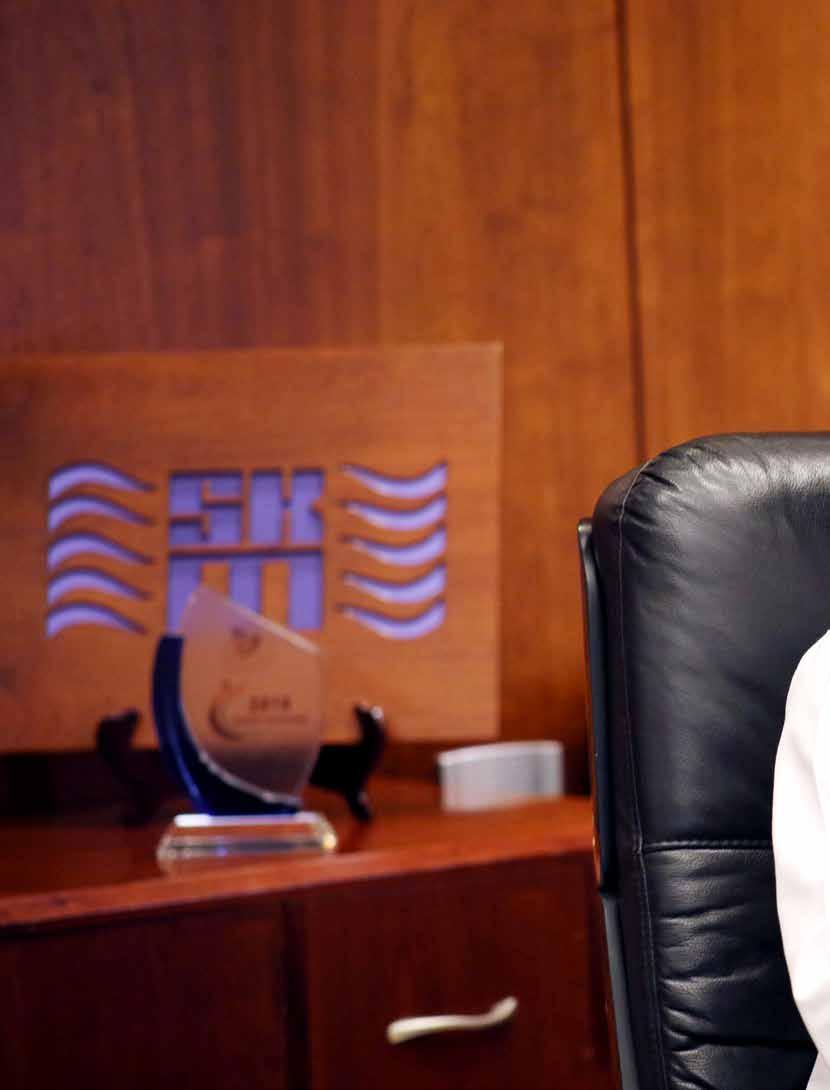
What technological and process innovations are you able to share as a GCC region manufacturer?
The industry is facing several challenges, globally, including those related to power consumption and energy efficiency of air conditioning equipment, Indoor Air Quality, and refrigerants and their safety characteristics and environmental impact. As SKM, we consider the harsh GCC region climatic conditions as a base for the design of our units. We developed air-cooled chillers, and rooftop and condensing units’ equipped with inverter compressors to reduce units power consumption and to enhance part-load efficiency. We have precision units to control indoor air temperature and humidity; these are normally used for computer and server rooms and other critical applications. We developed air-cooled chiller and rooftop packaged units with low-GWP refrigerants. There is a large industry related to oil and gas in the GCC region, in addition to harsh conditions at oil and gas sites. There is high probability of explosive gases and dust, where special air conditioning equipment are required. We have extensive experience in providing air conditioning equipment, including EX units, for all major projects in the region. Moreover, we have special coating systems for applying on casing units and heat exchangers suitable for hazardous areas and harsh climatic conditions present in GCC region oil and gas sites.
Our testing labs are available for all at the doorstep of the Middle East region as independent, accredited testing facility by the Emirates International Accreditation Centre, and as AHRI- and SASO-approved facility. We have testing labs for all the types of the HVAC products designed, installed and operated by our engineers.
We are not only testing products but are also working with teams and projects in the region towards the objective of developing new technologies and innovations. From testing the street cooling concept to testing highly efficient products, we are doing it all in our labs.
We have an open-for-all policy. We are available for providing testing service to all, ensuring that we all achieve the energy efficiency goals set by the UAE.

Where do you go from here with your testing facility? Would you be widening your horizon to establish a region-specific independent testing facility on the model of AHRI or Eurovent?
These types of labs in our testing facility are rare in the region. At the time of establishing the testing facility, we thought of the possibility of investing a little bit more and using it as a facility to make profit and, maybe, separate the facility completely from SKM as a business entity. This is how we started it, and it’s a good investment from my point of view.
Now, when you come to a testing facility, politics play a big role in this, especially with all the other manufacturers coming into the picture. But we have tried to keep it as a separate entity. SKM itself uses that lab, and it pays for the services.

Would it have been better that you had a name that is unique to the facility?
We are thinking of it, actually. As I told you, we were thinking of it, and we had a lot of meetings on this with a lot of entities in the region to have some kind of a collaboration, but as of yet, it is still under the SKM brand. It is an entity by itself, but it is called SKM. So, it is just a matter of changing the name if we decide to.
SKM is a privately owned company. It is not like a corporation. For us, the decision is about investment. Right now, this investment is good, because SKM is also there, and it is part of SKM. We need to know if it can stand on its own. There has to be a feasibility study on it. We are in the process of arriving at something in 3-4 months from now.
What is your vision for expanding the facility? Would it be something like an AHRI or a Eurovent that is able to serve equipment not only in the UAE or GCC region but worldwide. Do you see companies the world over using it as a testing facility for conditions unique to this region, such as high temperatures, humidity, sand and dust?
Yes, why not? See, at SKM, we are always up for investment. Right now, the lab is sufficient to serve SKM, but the reason we invested heavily in it is not just to facilitate our own needs but also to grow it, grow it, grow it. The guys in the lab are having continuous meetings with AHRI, Eurovent to go to the next step and see the possibility of becoming an international certification body.
Is that what you were referring to as aiming to achieve in 3-4 months? We are not in a hurry. It’s not like, ‘Oh, we need to do it, and we would lose money if we didn’t do it.’ No, nothing like that. Until now, it is good. The idea is there, and it is fine. The investment part was already done a while back, and so for me, if there is a good opportunity, we are going to make it; otherwise… it is not time-bound.
Broadly, what value are you delivering to customers?
We offer value proposition to our customers based on their CAPEX or OPEX requirement. For those customers for whom first cost is important, we offer value engineering solutions to keep cost in their budget. Where running cost and longer life are the basis of specification, we offer premium and high efficiency
equipment with higher specification. The ROI, in such cases, is between two and three years based on equipment type and size of the plant. This is possible due to wide range of equipment with inverterisation and a highly skilled engineering department. Our equipment is designed and tested to meet the high ambient requirement of the Gulf.
What is your approach to incorporating synergistic Al and, generally speaking, achieving Industry 4.0 preparedness? We have already started our journey of digitalising our shopfloor operations, which has increased visibility and productivity. We have also incorporated artificial intelligence (AI) and machine learning (ML) into our order processing to reduce process lead times and to eliminate manual interventions. We have applied robotic process automation (RPA) to automate repetitive tasks.
We have dedicated IT staff and ERP system to link all the processes and staff daily activities in one platform. Our existing platform includes management of products data, supply chain and outsourcing materials, warehousing and logistics, production planning and execution, and quality management and customer service. As products, all our chillers and most of our rooftop packaged units are equipped with different types of controllers and microprocessors, which makes them capable of remote monitoring and diagnosing the units’ operation. All these controllers have various Building Management System interface capability, like BACnet, Modbus and Lonworks. For rooftop package and split units, we offer programmable Wi-Fi thermostats for better control and monitoring of the units. Recently, we developed the Digital Air Handling Unit (Digital AHU), which includes EC fans, damper actuators, heat wheels, heat exchanger, electric heater, humidifier, filters, chilled water valves, sensors and advanced microprocessor controller. The unit can maintain the temperature, humidity and CO2 level in the conditioned space. All the communication between the unit controller and other devices within the unit is through Modbus RTU protocol, which makes the unit wiring to minimal and allows maximum data transfer between the devices and the controller. The unit can be connected to various Building Management Systems and has cloud connectivity for remote monitoring and control.
These actions are yielding better deliveries to customers, resulting in increased customer satisfaction. We are also using AI in our Smart Connect for monitoring and predictive maintenance of equipment.
What has been your response to the pandemic? What technological solutions, as opposed to products, are you offering to customers to futureproof their buildings from future possible pandemics?
We developed different types of Hygienic AHUs suitable for clean rooms, hospitals and other health care facilities. ASHRAE standard specifies minimum ventilation rates to enhance air quality inside the buildings and, in some applications, requires 100% outside air. With this in mind, we have developed units to treat outside air. During the pandemic, there was an increase in the use of tents. We developed special units dedicated for tents and suitable for moving easily from one place to another. One of ASHRAE’s recommendations is to upgrade system
filtration with high-efficiency filters. Our rooftop packaged units and AHUs are designed to be equipped with different types of filters and monitoring devices to maintain Indoor Air Quality in the spaces.
Are you confronting supply chain disruptions? If yes, how are you countering them?
Supply chain disruption is a global issue, and for sure, we are facing this challenge on a continuous basis due to COVID-19 and the complications arising out of it, in addition to the global political situation.
To cope with the circumstances, we had implanted certain strategies even during the pre-COVID period, which helped us in passing through this difficult time successfully, and which made our position stronger in the market. We were able to deliver our projects on time at a time when many of our competitors were struggling to get their products into the marketplace. Some of the strategies we adopted were avoiding single source of supply, whereby we evaluated and approved different component suppliers
for the product; and sourcing suppliers from different geographic regions, which gave us the flexibility to source from the region where the product was available, with competitive prices and terms. This was an important factor especially during the COVID-19 lockdown period in many countries as well as during the current political conflict in Europe. We also adopted the signing of longterm contracts with suppliers to ensure sustainable supply of components with fixed commercial terms. Further, we ordered materials in advance, to ensure we could have sufficient stock level, especially for long-lead-time items. As part of our bouquet of strategies, we also ensured having stock agreement with our main suppliers, and having a good relationship with our suppliers, which helped us in getting premium deliveries.
We welcome your views on the Q&A. Write to editor@cpi-industry.com

With ISHRAE on the verge of establishing a chapter in the UAE, its President, Chandrasekar Narayanan Srikantan, talks to Surendar Balakrishnan of Climate Control Middle East about the road ahead. Excerpts…
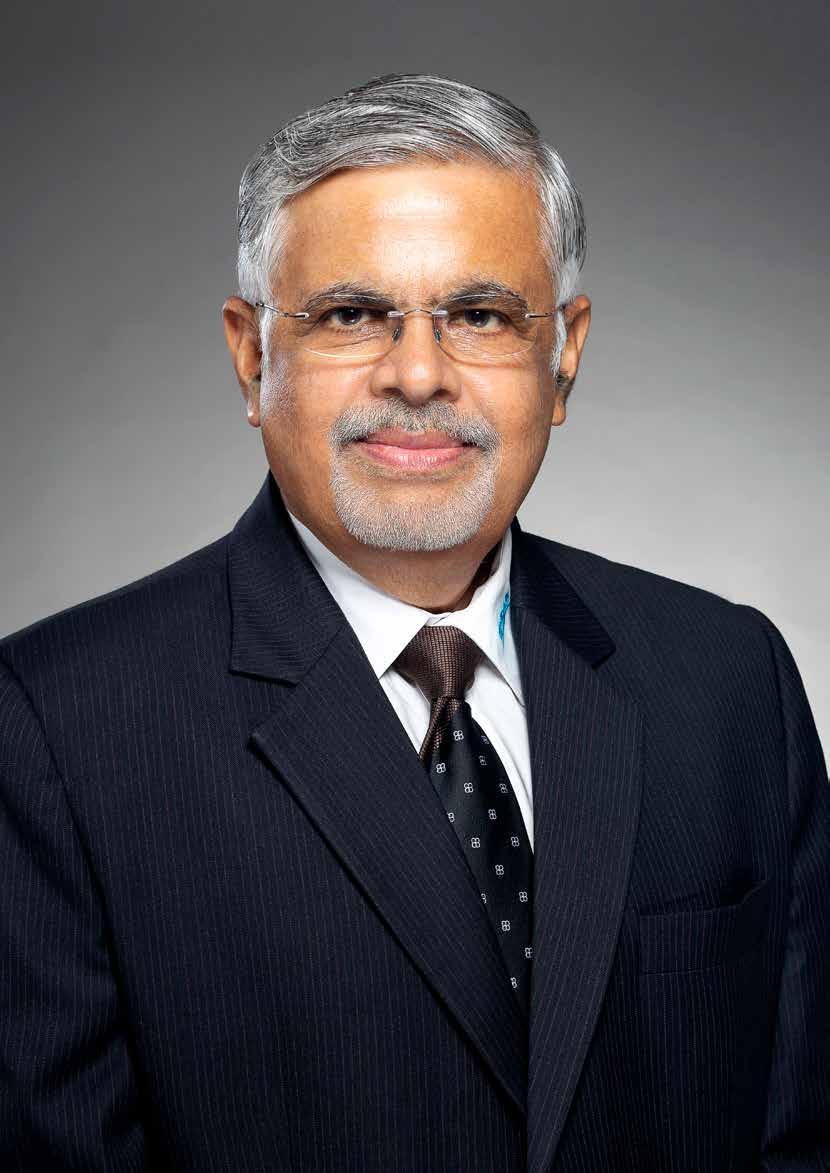
Have you established a timeline for launching the UAE chapter of the Indian Society of Heating, Refrigerating and Air Conditioning Engineers (ISHRAE)?
We are almost on the verge of opening the chapter, in the sense that we have more than 44 members today. We have to go through the process, though. Initially, the petition will come for the formation of the chapter. It will go to the Board of Governors for approval. So, in my view, we should be able to launch either end of the year or early next year.
What are you trying to achieve by establishing a chapter in the UAE? What objectives have you established?
As ISHRAE, our primary mission is education in the field of HVAC. What we are seeing is that we have members from different segments. It is not a Society that is helping only the contractors or suppliers or only the consultants. So, it’s a Society with a mix of contractors, suppliers and dealers who are working in this segment. It’s a mix of various sector members.
We started our operations as ISHRAE in the year 1981. It was just about five or six intellectuals from the HVAC industry who joined together with the thought, ‘Why not be something which creates a platform for various kinds of people to be there and to exchange the information that they have.’ So, our mission is exchange of technical knowledge. And then, the other very important mission of ours is the student community, of giving an opportunity for the student community to know that there’s a choice here with HVAC as a career and that it is a significantly growing field, an ever-growing field. And then, we make sure that we create standards for the use of the industry, and the implementation of the standards. And we give importance to the research, based on which the standards have come up.
We have about 45 chapters in India. You can find an ISHRAE chapter in almost every city. We are over 20,000 members, and we have about close to 7,000 student members. So, this is the kind of strength we have today in our 42nd year.
Now, we find many regions that are closely associated with India. There are members of ISHRAE who are present in
these locations. Now, what is the way to serve those members? Yes, we can connect over Internet for the exchange of knowledge, but there is nothing like a physical interaction that is taking place, there is no platform for the exchange of theoretical knowledge and to share the certification courses ISHRAE has. We are not able to give them our faculty because everything is so spread out in different places. And that’s how we felt the need to go outside the borders of India.
The first chapter outside India was in Bangladesh. There, we already had members, and they had been knocking on our doors for the last about 3-4 years. So, we said, ‘Okay, we will form the Bangladesh chapter first.’ It was established in August 2022. And the next region where we had good number of members was the United Arab Emirates. At the time when we started looking at the possibility of forming a chapter, we had 23 members in the UAE; today, as I said earlier, we are 44 members.
Indoor Environmental Quality. It’s a very important categorisation, and we have developed an air quality standard.
Now, this standard goes into revisions, time and again, which we are working on. People understand the importance of this standard, especially after the COVID pandemic. So, that’s one thing we ensure to spread the knowledge of.
Now, when we look at energy efficiency, which is again very important, there are various aspects, including commissioning. ISHRAE has developed a commissioning standard. Today, buildings are getting categorised based on green credentials. In India, we have the IGBC. So, we are concerned about how to rate a building. What is the performance basis on which you can rate the building? And is the building commissioned as per that? We look at the manufacturing industry’s contribution to energy efficiency. Just because you changed to a less ozonedepleting substance, are you going in for an energy-efficient chiller or not. And today, manufacturers in India are
Eurovent Middle East celebrated its 5th anniversary in September, and it was an occasion for members from Europe to visit the UAE and to speak on how the Middle East could benefit from European countries in terms of standards and regulations – the F Gas regulation, for instance. Do you foresee bringing such activity to the region? Given the fact that Indian manufacturers have developed expertise in developing R290 systems, is that something you, as a unified body, would look to inform regulators in the UAE to consider?
We at ISHRAE have Technical Committees that work on a lot of developments. For us, an area of concentration has been
producing equipment that are energy efficient and, at the same time, are contributing to the cause of minimising the depletion of the ozone layer. We are contributing towards the decarbonisation activity and are looking at how to achieve net zero.
How much progress has India made in phasing down or phasing out refrigerants that have a proven ability to harm the environment? Where is India with regard to moving away from R22? And is there a connect where the technician is trained not to vent the gases but to reclaim them?
Whether we like it or not, we are a developing nation. We are still not at the
Broadly, consumers also understand and have caught on to five-star labelling, which is important to them. Similarly, tomorrow, they will ask the authorities for non-R22 air conditioners
stage where we can make wholesome changes, but there definitely is progress. And we have to let it go as a work in progress, where a lot of people are working today to solve. The change is happening. VRFs are catching on. And even in the case of split air conditioners, there is a definite move towards inverter systems.
As for qualifying the technicians, ISHRAE is working with them. If you look at our membership profile, you will see that we have service technicians also as members of ISHRAE. We have academicians also as members, so there is an easy bridge that is happening, where the education and practical aspects are reaching the technicians, which is enhancing the sector.
Broadly, consumers also understand and have caught on to five-star labelling, which is important to them. Similarly, tomorrow, they will ask the authorities for non-R22 air conditioners. It is also about availability. Once they
are available, it is easy for people to catch on. And I’m seeing that today, nothing is impossible for a country like India. And I see India as working with neighbouring countries in a cooperative manner, and I am sure we together can make a wholesome change. It will happen, but we have to be patient.
When it comes to IEQ, is there a concerted approach to trace the IAQ performance of buildings and rate them? Has there been progress in continuous commissioning of existing buildings and ageing buildings, where several issues are cropping up in terms of microbial contamination, chemical contamination, thermal comfort and acoustical comfort? Earlier, people were more worried about PM levels. Today, that is not the case. We at ISHRAE have added a lot of aspects for consideration when
it comes to IEQ. So, there is work that is going on, which will happen – it will come into the next timeline for focus.
It is difficult for ISHRAE to allot time, because everybody is working as a volunteer. None of us are paid to carry out ISHRAE-related work. We are all giving our time voluntarily, apart from whatever work we do. So, it takes time. But it doesn’t mean that we are stopping anywhere. We have technical groups in about 34 subjects, and they’re working on these aspects and are reporting to the technical committee. And the technical committee finally comes out with guidelines. We also have task forces. Today, we have a task force that is working on passenger car environmental quality. So, there is significant work happening.
We welcome your views on the Q&A. Write to editor@cpi-industry.com


District Cooling utility says it has successfully completed book-building, raising over AED 2.6 billion (USD 724 million), giving it a market capitalisation at listing of AED 13.3 billion (USD 3.6 billion)
By CCME Content TeamMIRATES Central Cooling Systems Corporation PJSC (Empower), on November 9, said that following the successful completion of the bookbuild and public subscription process for its initial public offering (IPO), it has set the final offer price for its IPO at AED 1.33 per share, at the top of the price range.
According to Empower, following two successful upsize announcements, a total of 2,000,000,000 ordinary shares (Offer Shares), equivalent to 20% of Empower’s total issued share capital, were offered. This will result in approximately AED 2.7 billion (USD 724 million) of gross proceeds for Dubai Electricity and Water Authority PJSC (DEWA) and Emirates Power Investment LLC (Emirates Power), an indirectly wholly owned subsidiary of Dubai Holding LLC (Dubai Holding), together the “Selling Shareholders, upon settlement. Following completion of the Empower IPO, DEWA and Emirates Power will continue to own 56% and 24% of Empower’s existing share capital, respectively, Empower said.
Upon listing, Empower said, it will become the world’s largest District Cooling services provider listed on a stock exchange.
According to Empower, the Offering saw significant investor interest, with total gross demand for the IPO in excess of AED 124.6 billion at the final offer price, implying an oversubscription level of c.47x times for all tranches combined at the final offer price. The Qualified Investor tranche attracted demand across the globe of c.AED 105 billion, implying an oversubscription level of 46x at the final offer price, Empower said. The retail offering saw tremendous appetite from local investors with demand collected
in excess of AED 19.6 billion, implying oversubscription levels of 49x. The overwhelming investor demand underlines Empower’s compelling investment proposition and reflects strong confidence in Dubai’s long-term growth prospects and critical infrastructure, the company said.
H.E. Saeed Mohammed Al Tayer, Chairman, Empower, said: “The huge success of the privatisation programme so far shows that Dubai is well on its way to achieve the vision of the wise leadership to increase the total volume of its stock markets to AED 3 trillion. A vital part of the entire financial ecosystem is the process by which companies raise capital, including by going public. This incredible investor interest is deeply encouraging and illustrates that Dubai is a thriving dynamic international financial centre with real depth and growing demand to its capital markets. It also demonstrates Empower’s strong fundamentals and our company’s value proposition.”
H.E. Ahmad Bin Shafar, CEO, Empower, added: “This is a historic


moment for both Empower and Dubai, and marks an important milestone in the Emirate’s ambition to be a leading international financial centre. It reflects the deep confidence of investors in the role that Empower plays in supporting the city’s fast-paced economic growth. Mega-trends, such as expansion in infrastructure, a rising population and warmer climates, continue to accelerate the need for more efficient and sustainable cooling at scale. At the heart of Empower’s strategy is supporting Dubai’s energy transition, by providing access to sustainable cooling solutions, increased energy efficiency and encouraging responsible energy consumption. We look forward to continuing to deliver on our strategy as a listed business.”
According to Empower, the UAE Strategic Investment Fund (through Emirates NBD AM SPC), Shamal Holding and the Abu Dhabi Pension Fund (ADPF), together, the Cornerstone Investors, collectively subscribed for 12.6% of the final Offer Size. Subject to certain customary exceptions, the Cornerstone Investors’
shares are subject to a 180-day lock-up arrangement, from listing day, Empower said. Furthermore, as part of the offering to professional investors and other investors in a number of countries, including in the UAE, outside the United States of America in reliance on Regulation S (the “Qualified Investor Offering”), and in accordance with both the Companies Law and the Dubai Law, five per cent of the Offering was reserved for offer to the Emirates Investment Authority (EIA), and five per cent of the Offering was reserved for offer to the Pensions and Social Security Fund of Local Military Personnel (also known as the “Fund”).
Empower said it would commence trading on the DFM on November 15, 2022, under the symbol “EMPOWER” and ISIN AEE01134E227. At listing, the Company said, it will have a market capitalisation of AED 13.3 billion (USD 3.6 billion).
Empower said investors, investors who participated in the UAE Retail Offering will be notified of their allocation of shares via SMS no later than November 14, 2022.
According to Empower, Citigroup Global Markets Limited, Emirates NBD Capital PSC and Merrill Lynch International were appointed as Joint Global Coordinators, and EFG Hermes
UAE Limited, acting jointly with EFG Hermes UAE LLC, had been appointed as a joint bookrunner -- together with the Joint Global Coordinators, the Joint Bookrunners. Moelis & Company UK LLP DIFC Branch had been appointed as the Independent Financial Advisor to Empower, the company said.
According to Empower, Emirates NBD Bank PJSC was appointed as the Lead Receiving Bank. Empower said that Abu Dhabi Islamic Bank PJSC, Ajman Bank, Commercial Bank of Dubai, Dubai Islamic Bank, Emirates Islamic Bank, First Abu Dhabi Bank, Mashreq Bank, MBank and Sharjah Islamic Bank were appointed as Receiving Banks.

N THE face of rising inflation rates, supply chain disruptions and the growing net-zero-energy agenda, AESG announced the launching of its new portfolio of Cost Management Consultancy Services.
Making the announcement through a Press release, AESG said the line of services optimises cost efficiency and minimises risk for construction projects ranging from new developments and asset refurbishments to financial feasibility studies. Decarbonisation efforts under the lens of cost management expertise ensures an increased value proposition, setting out a path for financially optimised success in the net-zero economy, AESG said.
According to AESG, research shows that a staggering number of construction projects experience budget overruns. Saeed Al Abbar, CEO, AESG, said: “We’re witnessing an unprecedented shift in the regional construction industry with the announcement of several iconic developments and giga-projects. Ensuring these ambitious undertakings can be executed within budget will ensure their timely progress and completion and pave the way for further success. Moreover,
cost management can play a key role in enabling organisations to achieve their net-zero ambitions, which in turn, grants them easier access to working capital.”
The new Cost Management offering further extends AESG’s multidisciplinary expertise in sustainable design, fire engineering, façade engineering, acoustics, environmental consultancy, building commissioning and digital asset management, and strategy and advisory, the firm said. “With vast experience, gained from working on hundreds of iconic developments, our multi-disciplinary team has unparalleled insight into the multitude of factors that directly and indirectly impact overall project costs and timelines,” Al Abbar said. “This enables them to expertly guide clients in realising the maximum value for their money from the outset.”
To effectively deliver these offerings, AESG said it has established a highly qualified Cost Management team, and appointed Gary Tracey, an industry veteran of 18 years, as Global Partner and Head of Cost Management. According to AESG, Tracey has a degree in Construction Economics and Management, and has Estidama Pearl Qualified Professional (PQP) and MRICS qualifications. AESG said Gary adds value
to the development equation through his unique blend of construction knowledge and local market understanding.
Tracey said: “While cost overruns can be common in the construction industry, the reality is that many of the underlying factors scale exponentially, so effectively identifying and mitigating these, yields significant positive impact. In my 15 years in the region, I have gained a deep understanding of these challenges across a wide range of project types. I am enthused by the prospect of leading this highly qualified team in delivering this service to the Middle East market at this critical juncture, when developers are undertaking highly sustainable, mega and giga-projects that will secure a top position for the region on the global stage.”
ABREED on November 14 released its consolidated financial results for the first nine months of 2022, reporting an EBITDA of AED 912 million – an 18% increase over the same period, last year – and a net profit of AED 400 million, representing a three per cent increase.
Making the announcement through a Press release, Tabreed said that during the past three months, it made two significant announcements. On September 13, Tabreed said, it was confirmed that shareholders voted to harmonise with recent UAE changes to commercial law by increasing its Foreign Ownership Limit (FOL) to 100% – a strategically important move that increases flexibility and ensures the best possible share marketability. The following day, on September 14, Tabreed signed an agreement with EHCS (Egyptians for Healthcare Services Company) to design, build and operate an expansive district energy plant to supply cooling and heating to CapitalMed, an all-new healthcare city project by EHCS, in Cairo. Tabreed said the CapitalMed project is the second major deal announcement it has made in Egypt since it entered this new market in February 2022.
Additionally, and consistent with Tabreed’s progress throughout 2022, the third quarter saw new connections added in the UAE, Oman and Bahrain, increasing the company’s total connected capacity to 1,258,201 Refrigeration Tons (RT), the company said.
According to Tabreed, the financial highlights in the nine months ended on September 30, 2022 are:
• Group revenue increased by 13% to AED 1.66 billion (Q3 2021: AED 1.46 billion)
• EBITDA increased by 18% to AED 912 million (Q3 2021: AED 776 million)
• Net profit attributable to the parent increased by three per cent to AED 400 million (Q3 2021: AED 388 million)
According to Tabreed, operational highlights in the nine months ended on September 30, 2022 are:
• Total connected capacity reached 1,258,201 RT
• 48,106 RT of new customer connections added, with load additions of 28,403 RT in the UAE and 19,203 RT in Oman. In Bahrain, the load increased by 500 RT
• Tabreed achieved a record 16,382,176 hours worked without a single lost time incident (LTI), the most recent occurring in July 2015
Commenting on the company’s Q3 results, Khaled Abdulla Al Qubaisi, Chairman, Tabreed, said it had been a strong nine months for the company. “Throughout 2022, Tabreed has achieved important international growth, elevated public awareness, and accomplishment of long-term strategic goals,” Al Qubaisi said. “These third-quarter results show not only Tabreed’s resilience but also the wisdom of its organic and sustainable approach to growth – it is truly an exceptional UAE company.

“Tabreed continues to post record profits and has a consistently strong balance sheet, evidenced by Fitch’s updated rating outlook of “stable”, and affirmed at BBB. Building on this momentum, both
Al Marzooqiregionally and internationally, we will continue to establish new client relationships, engage in long-term alliances and expand our portfolio, further solidifying our already stellar reputation for operational excellence.”
Khalid Abdulla Al Marzooqi, CEO, Tabreed, added: “With these impressive third-quarter results, Tabreed continues to demonstrate its impeccable credentials as a business that is secure for its stakeholders, investors, employees and the environment. We are constantly seeking new collaboration opportunities with other progressive businesses that share our core principles, and we have exciting plans for the future, with an increasingly diverse array of services that will bolster our position as the industry leader.”
Highlighting an increase in connected capacity, amongst others, District Cooling company says the figures prove it is on the road to even greater successKhalid


AS AL KHAIMAH Municipality launched an energy audit programme for the industrial sector. Making the announcement through a Press release, the Municipality said the programme will help industrial companies identify energy-saving opportunities that will make them more environmentally friendly and competitive.
According to the Municipality, leading energy-conscious companies, such as RAK Ceramics, Stevin Rock, RAK Rock, Falcon Technologies, RAK Ports, Union Cements, Eternity Technologies and Future Architectural Glass, are among the first that signed agreements with it, during the RAK Energy Summit, on October 4 and 5, in Ras Al Khaimah, and have been slated to take part in the programme. The industrial sectors initially supported in the programme are cement, ceramics,

quarries, glass, building materials, metal fabrication and packaging, the Municipality said.
Speaking on the occasion of the launch of the programme, H.E. Munther Mohammed bin Shekar, Director General, Ras Al Khaimah Municipality, said: “The programme will support local industrial companies in identifying opportunities for energy savings and reduction of emissions that will help them remain competitive over the long run. I encourage all the industrial companies in Ras Al Khaimah, for whom energy is a main cost, to participate in this initiative.”
According to the Municipality, participating industries will receive an energy audit, conducted by expert energy auditors, and will periodically share progress of implementation with the Municipality. Audits are procured
at scale with the support of the Municipality. RAKBANK will provide a credit facility to dilute the cost of the audit over time, along with evaluating for any other financial support that such companies may need, the Municipality said.
Until now, the Municipality said, it has empanelled a total of seven expert industrial auditors using a competitive tender process. Participating companies can choose any of the empanelled auditors to conduct an energy audit, including onsite measurements and assessment of energy-saving opportunities, the Municipality said. The Reem Office of the Municipality will support both parties during the whole process by facilitating data collection and logistics as well as by providing technical support, the Municipality said.
Says such companies as RAK Ceramics, Stevin Rock, RAK Rock, Falcon Technologies, RAK Ports, Union Cements, Eternity Technologies and Future Architectural Glass are among the first signatories
In addition to the energy audits, the programme will include knowledgesharing sessions with energy-efficiency experts as well as with suppliers of technologies and services, the Municipality said. These sessions will enable local industries to learn and
follow best practices and use state-ofthe-art technologies to become more energy efficient and contribute to achieving wider sustainability targets, the Municipality said.
According to the Municipality, the initiative is part of the Energy
Management programme of Ras Al Khaimah Energy Efficiency and Renewables Strategy 2040, and is in line with several strategies and policies, including ‘Operation 300bn’ of the Ministry of Industry and Advanced Technology, and the UAE Circular Economy Policy.


Allied has grown into one of the leading Engineering and Project Management firms in the Middle East, boasting offices in 3 major Countries in the Middle East (Egypt, United Arab Emirates, Kingdom of Saudi Arabia).
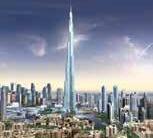
Allied offers full range of Engineering and Project Management services provided by nearly 140 dedicated professionals distributed among Egypt, UAE and KSA.
The company is a multidisciplinary consulting firm and has a track record and specialization in Buildings, Industrial Works and District Cooling and Power Generation Plants.


Inverter-based technology, which runs on R-290, has excellent thermodynamic properties, company
AIKIN Middle East and Africa unveiled its new-generation Monoblock refrigeration system at Gulfood Manufacturing 2022, which took place from November 8 to 10 at the Dubai World Trade Centre. Developed using R-290 and inverter technology, the Monoblock units are designed for minimal environmental impact and deliver excellent thermodynamic properties, Daikin claimed through a Press release.
The Monoblock range not only reduces power consumption drastically but also brings quality and speed while installing the product with minimal maintenance, Daikin claimed. The units are ideal for small and medium enterprises with cold storage needs, including restaurants and supermarkets, the company said.
Commenting on the launch, Sanjeev Maheshwari, Refrigeration General Manager, Daikin Middle East and Africa, said: “According to reports, nearly a third of all food produced each year is squandered or lost before it
can be consumed. With the launch of a new-generation of Monoblock, we have reiterated our commitment to innovation, sustainability, food security and safety and marked it as the most pivotal moment for Daikin in the region. Supporting the safe and secure supply of perishable foods from farm to fork, as we say, our innovative and sustainable solutions help businesses to reduce their carbon emissions alongside food waste, both of which help us to protect the planet better and increase efficiency.
“Cold chain solutions that meet energy efficiency and sustainability standards will be critical to the growth of the regional food manufacturing industry. With our latest product reveal – our Monoblock refrigerant solutions – smalland medium-sized businesses can enjoy our effective, reliable, and sustainable refrigerant solution.”
According to Daikin, the Monoblock enables businesses to manage their stock better and is suitable for both medium- and low-temperature rooms, sized from four cubic metres to 25 cubic metres. In addition to delivering high efficiency and energy savings, the Monoblock operates with minimal
noise and ensures flexibility of business operations, the company claimed, adding that it is the first Daikin-engineered and branded commercial refrigeration unit manufactured at its Zanotti plant in Italy.
Besides launching its Monoblock, Daikin showcased several other systems at the show, including its AHT products with inverter-driven ZEAS units for remote application, which the company claimed, is able to deliver a one-stop solution for food retail chain needs. The company said it also showcased its truck refrigeration unit and single-screw technology, utilised in packed ammonia compressor racks, applied in various storage and processing facilities.
ALKIA US Chiller Services said the ISF Al Duhail District Cooling Plant earned recognition for its superior performance as the most efficient District Cooling Plant in the State of Qatar. Making the announcement through a Press release, Dalkia US Chiller Services added that it is operating and maintaining the plant.
Dalkia US Chiller Services said the plant won the award during the 10th anniversary celebration of the National Program for Conservation and Energy Efficiency (Tarsheed), under the slogan ‘Towards Sustainability and Energy Efficiency’. The Qatar General Electricity and Water Corporation (Kahramaa) organised and conducted the celebration event.
Speaking on the occasion, Dan Mizesko, President, US Chiller Services, said, “This achievement is further confirmation that Dalkia US Chiller Services’ specialised retro-commissioning and O&M services, including energysaving retrofit solutions, are resulting in regional and worldwide recognition for outstanding District Cooling Plant energy efficiency performances.”
Studies have shown that ducts leak 20% or more and waste $2.9B in energy costs annually.

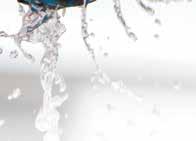



Aeroseal’s computer-controlled, aerosol-based duct sealing technology solves the energy efficiency problems in buildings related to air duct leakage, while eliminating at the time, labor, shutdowns, and expenses associated with typical ductwork repairs and replacement.


Connect the Aeroseal system to your building’s HVAC system.
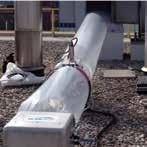

Contact: vilas.bakshi@aeroseal.com
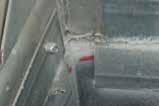


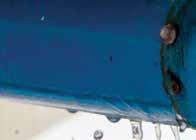




STEP
Seal the ductwork (the computer-controlled technology does it for you).
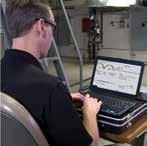
STEP

Certify energy-saving results (a certificate is published for each project).





AKA Solutions won the ‘Green Building Product of the YearEnergy Management’ award for takaunify, its energy-monitoring platform, at the 2022 MENA Green Building Awards, on October 27 in Dubai.

According to Taka Solutions, the award category recognises a product/ component that addresses energy management and leads to significantly improved sustainability performance over business-as-usual. The category further recognises the product/component on the condition that it was introduced to the MENA region – or a specific location in the region – in 2019 or thereafter, and was not previously available in the MENA region.
Organised by the Emirates Green Building Council and the World Green Building Council, and in partnership with other regional green building councils, the MENA Green Building Awards celebrates and recognises excellence and best practice in the built environment across the design, construction and operation of building projects in the MENA region covering 16 different categories, Taka Solutions pointed out.
Taka Solutions said that for years, it has been helping facility owners reduce
their energy consumption and utility costs. Taka Solutions said it stands for democratising energy efficiency. It added that it believes that everyone must have easy access to the right tools to reduce their energy costs and run more sustainable facilities.
Takaunify is an energy-monitoring platform that unifies energy, operations and business, Taka Solutions said. The platform is an open-source energymanagement platform, developed by the Taka Technology team, which incorporates AI and Machine Learning as part of the platform, allows its users to virtually audit their properties, remotely control and monitor their buildings, benchmark against similar building types, and analyse and see returns on investment, among other benefits, Taka Solutions said. Takaunify provides users with data about their consumption patterns so they can make informed energy management decisions and maximise savings, Taka Solutions said, adding that to date, over 1,200 facilities are registered on the platform.
Takaunify uses counters or subcounters located on-site or in the building to gather data for each utility – electricity, heat, water and gas – in order to provide
a complete picture of energy usage, Taka Solutions said. The award submission focused on the system functionality, features and case studies of customers currently using the platform to manage utility usage, the company added.
Taka Solutions said the four modules are: Utility Bill Management System (UBMS), Realtime Metering, Real-time Asset Performance and Power-up Add-ons.
“Winning this award is a great accomplishment for Taka Solutions,” said Henrique Pereira, CEO, Taka Solutions. “It does not only show the strength of our energy-management platform, which has been developed over the last years but also reinforces the need to have real-time data and control capabilities as the core enabler for successful energy retrofits and energy efficiency optimisation of existing buildings. In a time where data is abundant but not always reliable or easy to navigate, a tool like takaunify helps organisations manage the way they consume energy, identify areas for improvement, and accurately measure the results of their actions. For Taka Solutions, this confirms our belief that this is the correct path towards sustainability and aligning with the ambitious goals of the UAE, paving the way for the future.”
VAPORATIVE cooling solutions company, Portacool said it is participating in The Big 5 Dubai, from December 5 to 8, to highlight its Jetstream series cooling solutions in the regional markets. Speaking to Climate Control Middle East, Ziad Ibrahim, Regional Sales Manager (MENA), Portacool, said the company is returning to the Show after a fiveyear break.

“With the market in recovery mode, post-pandemic, we have been seeing growth in demand with our sales volumes doubling,” Ibrahim said. “Specific requirements come from the oil and gas sectors, which Portacool meets. Much demand is to come from huge event venues, such as World Cup 2022 stadiums and fan zones, which need thousands of portable cooling systems, as the matches are bringing an estimated 1.5 million fans to the region. This shows it is important for Portacool to offer products in this part of the world.”
Talking about the company’s participation in The Big 5, and the key focus, Ibrahim said the aim would be to create exposure for Portacool’s range of products and for the application of the products, including market expansion across sectors, such as residential, commercial hospitality, education, government and industry. “The event is one of the biggest platforms for marketing our products to exhibit our products and services to such a large audience,” he added.
Ibrahim said the company would be showcasing the Jetstream evaporative coolers, which have a revamped design to generate significant airflow and provide a better cooling option. The Jetstream series, he said, is available across the Middle East region. At the same time, he said, the company is keen to make use of the Show to
enter into long-term collaboration with distributors, with the intention of supplying the products to upcoming big projects in MENA, especially in Saudi Arabia. “Our Jetstream models will be used in one of the largest urban projects – the Riyadh Boulevard,” he said. “Also, we already have our evaporative coolers with major top companies like Emirates Airline, Etihad Airways and many airports across the region. The military is also using them in different places all over the GCC region.”
Ibrahim said he expects the Middle East outdoor cooling market to continue to grow strong. Recent data suggests it surpassed USD 4 billion in 2021 and is expected to generate over nine per cent CAGR between now and 2028, he said, adding that there has been an increased focus towards green building solutions, and customers are seeking cost-effective solutions. Evaporative cooling, he said, continues to be a dependable and cost-effective solution, especially in addressing the region’s harsh climate.


Condair high pressure humidifiers offer direct room humidification with a flexible range of options. A pump station can be combined with different nozzle systems to meet the installation needs of any project.
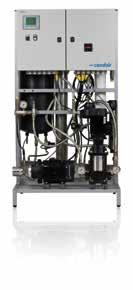
Discover more about the Condair High Pressure Humidifiers

Tel: +(971) 4 368 8491 Email: me.sales@condair.com Web: www.condair.ae
Humidification, Dehumidification and Evaporative Cooling
Company says it is returning to the show after a gap of five years
 By CCME Content Team
By CCME Content Team
ENTURE capital and private equity financier, European Investment Fund (EIF), a part of the European Investment Bank (EIB) Group, signed investments totalling €247 million at the COP27 climate conference. Making the announcement through a Press release, EIF said it did so to enable five equity funds to back €2.5 billion of climate action investment that helps to deliver the European Union’s climate and energy targets.
According to EIF, the new financing contributes to the European Green Deal, the roadmap for Europe to become the first climate-neutral continent by 2050, and REPowerEU, the plan to rapidly reduce dependence on Russian fossil fuels and fast forward the green transition.
The investment agreed – backed by the InvestEU programme – will enable the fund managers to reach a first close or attain their target fund size, EIF said.
EIF said it has committed:
• €28 million to the Growth Blue Fund I, a private equity fund focusing on the blue economy, sustainable economic activities relating to the oceans. It will mainly invest in Portuguese small and medium companies across all sectors.
• €30 million to PureTerra Ventures, a water technology early growth fund, which invests in small and medium enterprises across the European Union scaling game-changing technologies to radically alter the usage, conservation and treatment of water. PureTerra is the first of its kind, specialist water-focused fund in Europe and the first water-focused investment in the EIF’s venture capital portfolio.
• €39 million to the Zintinus Fund
I, a venture capital fund focused on growth stage investments in sustainable food innovation across Europe, in particular alternative proteins, functional food, clean nutrition and food waste reduction.
• €75 million to the SUMA Capital Climate Impact Fund III, an infrastructure fund targeting greenfield energy transition and circular economy projects predominantly in Spain.
• €75 million to the Eiffel Transition Infrastructure Fund, an innovative fund designed to provide equity bridge financing for renewable energy infrastructure assets in Europe.
EIF said the signatures signal a clear direction of travel for it as an organisation. EIF said the Fund will play a key role in the delivery of the EIB Group’s contribution to REPowerEU, with a dedicated and additional envelope for EIF equity investments in funds to support innovative companies and the European Union’s path to net zero.
“Contributing
is a top priority for the EIF and the EIB Group. This has become even more important and urgent, given the current energy crisis. We are, therefore, very happy to invest in five equity funds that will make a crucial contribution to the energy transition in a variety of sectors, from water to food and infrastructure. Signing these commitments at COP27 sends a strong market signal that investing in green business models and technologies is possible and vital to our common future.”
Gelsomina Vigliotti, Vice-President, EIB and Board member, EIF, added: “Today’s new commitment will mobilise €2.5 billion of private-sector climate investment and demonstrates how harnessing the expertise and focus of venture capital and private equity is accelerating high-impact climate-focused investment.”
Ambroise Fayolle, Board Member, EIF and Vice-President, EIB, who is responsible for the financing of
Organisation says it is committing €247 million to the initiative, which it expects will deliver the European Union’s climate and energy targetsAlessandro Tappi, Chief Investment Officer, EIF, said: to the European Union’s green transition agenda
environment and climate action, said: “The EIF’s support for private-sector investment, confirmed today, will scale up the deployment of green technologies and develop innovative solutions to contribute to reaching Europe’s climate targets. This shows how the EIB Group is scaling up climate finance to tackle the climate emergency.”
Paolo Gentiloni, European Commissioner for Economy, said: “The green transition must be accelerated and cannot be delayed. The InvestEU programme seeks to mobilise private investments to help drive the support needed to deliver that transition. The agreements signed are clear evidence of this, as well as of InvestEU’s role in helping to make sustainable investment projects across the European Union a reality.”
Miguel Herédia, Manager, Growth Blue, said: “Growth Blue shares the vision of a more sustainable economic model and the decarbonisation of our societies and production methods. We are certain that the ocean will play a critical role in this transition, since it is one of the few alternatives to produce protein, energy or new materials to supply an increasing demand boosted by a growing population. We also need to protect the ocean from the impact of the world’s current economic model.
We believe we can do this by providing both sustainability and returns for our investors.”
Job van Schelven, Partner, PureTerra Ventures, said: “Water is the foundation of life, yet undervalued by most. The overall water cycle is broken, and its repair is long overdue. The European Investment Fund subscribes to PureTerra’s ambition: Clean water for all. PureTerra’s partners are grateful to InvestEU and the Dutch Future Fund for valuing the necessity of water expertise and entrepreneurial experience for scaling solutions to maximise impact. With the commitment to water, the European Investment Fund is leading the financial markets in recognising the need and the opportunities inherent in water distress.”
Olaf Koch, Partner, ZINTINUS, said: “The transition of the food system is one of the biggest challenges and opportunities of our time. We are fully committed to supporting young companies in this space and helping them on their growth journey. Having the EIF as a partner is a privilege and a great encouragement”
Enrique Tombas, CEO, Suma Capital Climate Impact Fund III, said: “We are delighted to have the support of the EIF in our third-generation infrastructure impact fund to fight against climate
change. We have been developing this activity for the last 10 years, with our firm purpose of committing to building the future that we believe in, more inclusive and decarbonised.”
Pierre-Antoine Machelon, Head of Infrastructure, Eiffel, said: “By providing much-needed equity alongside midsized independent renewable energy developers and power producers, the Eiffel Transition Infrastructure fund accelerates the development of new renewable energy capacities, helping Europe achieve energy sovereignty and generating a significant positive impact on greenhouse gas emissions and climate change.”
The signatures took place at an EIF side event at COP27 about “The contribution of European Venture Capital, Private Equity and Infrastructure Funds to the EU Green Deal”. The event, which discussed the main impediments to scaling up investment in the energy transition, included a keynote speech by Vigliotti and was moderated by Tappi. It brought together a panel of three EIF-supported fund managers with strong green strategies: Nicolas Piau, Co-Founder and CEO, TiLT Capital Partners; Julia Padberg, Partner, SET Ventures; and Michal Kurtyka, Strategy Advisor, Eiffel Investment Group.
AMON introduced the GLACIÄR MIDI refrigerant gas detector, which it described as reliable, and designed to protect the environment, protect people and protect property. Making the announcement through a Press release, SAMON said the device meets the needs of every user through its range of digital and analogue interfaces.
Launched at Chillventa, in October in Nuremberg, the device has attracted high levels of interest from new as well as existing users of SAMON’s refrigerant gas detection products, the company claimed.

SAMON said GLACIÄR MIDI is suitable for detection of all refrigerant gases, including natural refrigerants, such as CO2, propane and ammonia, as well as HFC and HFO refrigerant blends.
SAMON said a brand-new app it has introduced allows simple configuration and maintenance of detectors using a Bluetooth interface. GLACIÄR MIDI also includes an analogue service wheel, allowing users to interact with their refrigerant gas detector without requiring any special tools, the company said.
Dzenkis Junuzovic, R&D Director, SAMON, said: “I am extremely excited to unveil GLACIAR MIDI to our customers.
We have poured over 30 years’ experience and expertise in refrigerant gas detection into this development. This is just the first in the GLACIAR series, we have even more coming to support the refrigeration and air conditioning industries. Watch this space!”
OHNSON Controls (JCI) has named Lei Schlitz as Vice President and President, Global Products, effective November 14. Making the announcement through a Press release, JCI said Schlitz will lead the Global Products business, succeeding Jeff Williams, who retired earlier this year. She will be based in Milwaukee, Wisconsin, the company added.
“There is a multi-billion-dollar addressable market in front of us, with unconstrained growth opportunities to deliver increased customer value through a wide range of building portfolio products,” said George Oliver, Chairman and CEO, Johnson Controls. “Lei brings a wealth of experience and knowledge to the role, and she will be an asset to Johnson Controls as we accelerate
our solution offerings and leverage our scale to capture this incredible market opportunity.”
JCI said Schlitz joins the company from Illinois Tool Works (ITW), where she most recently held the role of Executive Vice President, Automotive OEM segment. Throughout her 14-year career at ITW, she held a number of progressive roles, including Vice President, Research and Development; Group President, Global Ware-Wash & Refrigeration Business and Food Equipment, Asia Pacific; and Executive Vice President, Food Equipment Group, JCI said.
Prior to ITW, Schlitz spent seven years at Siemens Energy & Automation, most recently as the Business Manager for Emerging Businesses, Residential Product Division, JCI said. Prior to that, she served as Director of Product & Manufacturing Engineering, Low Voltage Group. Earlier in
her career, Schlitz spent time at both General Electric and Eaton Corporation, JCI said.

According to JCI, Schlitz holds a doctorate in Mechanical Engineering from the University of Wisconsin-Milwaukee and a bachelor’s degree in Engineering Mechanics from Tsinghua University, China.
UNLI launched the B-Max backward-curved centrifugal fan, saying that it developed the fan for the purposes of high-end HVAC unit applications.
Making the announcement through a Press release, Dunli said the impeller, motor and controller of the fan feature a brand-new design that brings the customers a better user experience.
According to Dunli, the B-Max facilitates easy installation. The fan is a one-piece solution, where the motor, impeller, inlet ring, supporting rack and mounting plate are matched and assembled perfectly with one piece, which enables the customer to assemble the fan easily, Dunli said.

The fan also has excellent efficiency,
Dunli claimed. The fan has industryleading static pressure efficiency, which meets ErP2020 Standard requirements, Dunli further claimed. The fan also has aerodynamic efficiency as high as 75% and above, Dunli said, adding that it features a compact-structure external rotor EC motor and that the efficiency of the motor meets IE4 standard.
Dunli said the fan has optimised, aerodynamic, airfoil-shaped blade design, achieved through using CFD technology. The company further said, the fan has industry-leading noise level and that it has gone through over 40 reliability tests.
Additionally, Dunli said, the fan has a plethora of control functions, including 0-10VDC (15VDC)/PWM signal control. It also features phase-missing, overcurrent, over-voltage, over-temperature protections, and signal control and
fault alarm functions, Dunli said. It also features 485 communication functions with MODBUS-RTU interface to monitor working, stop, speed and malfunction of the motor status, the company said.
According to Dunli, the fan lends itself to a wide range of applications and can be used for AHUs, and in data centres and environment that require precision air conditioning.
Schlitz will lead Global Products research and development, product management and the future roadmap for new production introductions, company saysLei Schlitz
Company says the fan has been developed with high-end HVAC units in mind

SHRAE released its technical programme for the 2023 ASHRAE Winter Conference, from February 4 to 8 in Atlanta, at the Omni Hotel at CNN Center and Building A of the Georgia World Congress Center. Making the announcement through a Press release, ASHRAE said the full conference schedule is available online (www.ashrae.org/2023winter) and in the ASHRAE 365 app.
“The conference will focus on addressing the critical challenges we all face in rapidly evolving industry and policy landscapes,” said Christine Reinders-Caron, the Chair of the committee for the conference. “It will feature papers and programs that are pertinent to the future of buildings and how they interact with people and the environment. Attendees will learn about the latest developments in building design and construction, from virtual design and simulation to decarbonisation and grid resilience.”
According to ASHRAE, the five-day event includes eight conference tracks, over 100 technical sessions, tours, social experiences and industry-specific committee meetings. The conference will offer a wide range of industry-specific technical tracks that explore emerging approaches to building design, construction, operation and decarbonisation, ASHRAE said.
Peter Leyden, a leading expert on new technologies and future trends, will give a keynote presentation, ASHRAE said, adding that Leyden will focus on technological revolutions in Infotech, like AI; in Biotech, like genetic engineering; and in Energy Tech, like electric transportation.
A new track at the conference, “Pathways to Zero Energy Emissions and Decarbonization”, will highlight methods being developed to reduce carbon impact on the global environment and the actions that the Society and its members are taking to advance these efforts, ASHRAE said.
According to ASHRAE, sessions in this track include:
• Accelerating Change in Building Design and Operation towards a Decarbonised and Net-zeroenergy Future
• Combined Heat and Power (CHP): A Key Carbon-Free Dispatchable Energy Resource
• Igniting a Carbon-free Fire around Building Science
According to ASHRAE, other technical programme tracks include:
• Fundamentals and Applications
• HVAC&R Systems and Equipment
• Refrigeration and Refrigerants







• Grid Resilience and Thermal Storage
• Pathways to Zero Energy Emissions and Decarbonisation
• Multi-family and Residential Buildings
• Operations and Maintenance
• Building Simulation and Virtual Design in Construction
According to ASHRAE, the conference includes in-person as well as virtual options for attendees. The ASHRAE Learning Institute will offer 20 courses during the conference, ASHRAE said, adding that all courses are approved for continuing education credits towards maintaining P.E. licensure.
The conference will focus on addressing the critical challenges the HVACR industry faces in rapidly evolving industry and policy landscapes
I was born in Sharjah and spent much of my life in the UAE. It is my first home.
My father was an expat for over three decades. We lived in the old part of Sharjah city, very close to the Rolla area. We are a close-knit family, and as the youngest of three siblings, I was always the pampered one in the family.
I studied at Sharjah Indian School till Class 6, after which I moved to India for three years before returning to Our Own Indian School, Sharjah.

My parents, first-generation expats, stayed in the UAE until my father retired from the Bank of Baroda and settled in India. Currently, we live in four continents – my sister is in London with her family, and my brother lives in Toronto. Although we live far away, we make it a point to talk to one another every day. My parents have always ensured that – we have always stayed connected and shared every special moment with one another. We used to see each other at least once a year, but COVID-19 stopped it. In fact, I haven’t seen my brother for about five years.
I took the Science Stream while in high school but was unsure what I wanted to become. Like any teenager, I picked up new ambitions every now and then. When I went to the doctor, I wanted to be one; and when I encountered some other profession, I switched allegiance.
All this changed in 2000, when I visited my sister in London after her marriage. A relative I met there was pursuing aeronautical engineering, and talking to him about it spurred a fascination in me on how aeroplanes are built and what goes into them. From then on, my path was clear. I got into an aeronautical engineering course at Queen Mary University College, in the United Kingdom.
I earned a master’s degree in Aerospace Engineering and was ready to start my career. However, the industry was still suffering from the aftermath of 9/11, and there was much uncertainty. The mood in the industry forced me to think about how to move forward. I even considered becoming a pilot to stay in the industry. Though I met the eligibility requirements, I
dropped the idea, as it would have meant additional years of study and more expenses. The wisdom was in changing careers, which meant having to leave my passion behind.
Fortunately, my degree offered me more than one career path. I could get into electronics or mechanical engineering, and eventually, I chose the latter.
My first job after graduation was with Colt International, in 2011, working on car park ventilation and smoke extraction systems. Surprisingly, I was offered the opportunity to work in Dubai, which was a chance to come home, and I gladly grabbed it.



During my tenure at Colt, I learnt a lot about HVAC systems and worked on many significant projects here. Some of the outstanding projects I had the privilege to design include the JW Marriott Marquis, the Emirate Park Tower Hotel, the underground car park around the Burj Khalifa across Downtown, Mall of the Emirates, Ikea (Dubai Festival City) and the World Trade Centre in Dubai.
During my five-and-a-half-year stint with Colt, I learnt and became passionate about HVAC technologies and their role in keeping living spaces safe. One of the most important projects I worked on was the 128,000-square-metre parking space for the General Organisation for Social Insurance (GOSI) in Saudi Arabia; it was hugely inspiring.
In 2009, the financial downturn caused many projects to grind to a halt.
Budgets were cut on most ongoing projects, and lean management became essential, which gave immense importance to downsizing and also consultancy. There were no exceptions. I decided to go into consulting, which was an eye-opener, mainly because I understood the MEP technologies’ massive impact on building design.
Even though working as a consultant – with WME Consulting – was shortlived, it impacted my career. Shortly after leaving the job, in 2014, I was offered the opportunity to drive Greenheck’s business in the MENA region.
Working at Greenheck, a leading manufacturer of air-moving solutions for the commercial and industrial sectors, was like reconnecting to my first passion for materials and engineering. By now, I had already worked on both sides. I started my career as a systems and solutions engineer. I moved to the structural aspects of building as a consultant. Eventually, I learned about the production side of the HVAC systems at
Greenheck.
Working as an Application and Sales Engineer gave me a good understanding of the products that serve the regional market and its dynamics. In 2019, I took over as Managing Director of Ziehl-Abegg Middle East and currently manage all business in the Middle East and Africa region for the company for Ventilation and Drives (Elevator) division.
Today, I am no longer involved in building climate control, as we are in numerous industries supplying equipment for ventilation and cooling systems for data centres, stables, industrial plants and clean rooms. An end user may not know us or recognise our brand the same way as a refrigerator or TV brand; yet, we play an essential role in making their homes more comfortable and secure.
Another vital industry I am proud of being a part of is food chain. With supply chain disruptions following COVID-19 and other issues, many countries in the region – especially the UAE, Saudi Arabia and Egypt – are investing in ensuring food security
If you look at buildings in the Middle East region, especially the old ones, contractors had rarely given any importance to ventilation; the onus was on coolingOn site whilst working on a project During London days With Ziehl-Abegg team members
and are building high-tech cow sheds, poultry farms and greenhouses. I am very excited to work on these projects, which provide good ventilation and a comfortable environment to the animals. Due to the harsh climate, any facility built in the region must be well-ventilated. It is also important to ensure that the animals aren’t mistreated; their welfare in these facilities is crucial. It is my privilege to be involved in these initiatives.
When Ziehl-Abegg opened its regional business, in 2017, we didn’t invest in a big, swanky office. We started with a small office and then expanded the warehouse space as we started to build the business. Within two years, we had to move to a much bigger office. I can relate to this ethos of taking small steps to success and staying away from the culture of excess. That’s my mantra for life and business. I identify with having an end goal, but instead of leaping, I believe it is important to take calculated steps to reach it, keeping in mind the risks. This is very important for sustenance.
This philosophy has helped me grow, and I see Ziehl-Abegg taking a similar approach; this is why the company has survived five economic downturns and thrived.
Within a few years of my joining ZiehlAbegg, COVID struck, and there was great panic among our team members. My role as a leader suddenly changed


from growing the business to making sure our team felt safe and that we provided them with a safe place to work. The challenges were not only about the business but also about how we live our lives. Many of our staff are the sole breadwinners of their families, and we needed to ensure we were there for them.
I felt frustrated with readjusting my family’s whole life because of the pandemic. I was worried about my parents and my siblings, who were living far away. So I understood what our team was going through. We took the initiative to create awareness and organised mental health events just like any other organisation. Most importantly, we made sure that we were there for one another as colleagues. I have an open-door policy – my team can come to me with any problem. This has helped us overcome the challenges of the pandemic. I am proud to say that to date, not a single employee has left us, and our team has remained the same.
I believe that our work relationships are not just about business; they are also about basic social contacts. I always try to maintain a friendly relationship within the group and among the subsidiaries.
Globally, each region has its own HVAC specifications. Still, in the Middle East, there is a mix of all the different specifications available worldwide. The industry here is as fragmented as the demographics. The various stakeholders
bring best practices from their market, and sometimes these are less viable than intended. The question now is, ‘How do you get to the point where you do something suitable for the region?’ That’s the role I try to play as I work on different projects. Having spent most of my life here and also having spent time abroad, I am able to use my local knowledge to give feedback to international manufacturers on what is needed locally. But I have noticed that with most products, it is difficult to adapt them to the region.
I align my contribution to the sector with Ziehl-Abegg’s promise of delivering efficiency, and have always tried to make a change by improving the efficiency of every project I have delivered.
If you look at buildings in the Middle East region, especially the old ones, contractors had rarely given any importance to ventilation; the onus was on cooling. That has changed in recent years – every building has had to improve its Indoor Air Quality and efficiency. Newer building requirements focus on efficiency, which is where our products come in. As we expand into other industries, they, too, will see the benefits of these products, and I see great potential for manufacturing units in this market.
The pandemic is slowly waning, but global supply chain challenges remain. Although we managed the challenges well by stocking up on necessary items
to support our customers, my dream is to set up a regional production facility. As I said, this market has enormous potential, and demand will only grow. The UAE is already one of the leading countries in tourism, and other industries are also being developed; we see this in Saudi Arabia, as well. Both countries are investing to boost the services and manufacturing sectors, including the HVAC industry.
I believe we, as a company, are in the right place at the right time, and things can only get better. All these are the perfect conditions to set up production here. When I look at some of our subsidiaries in other regions, I see they started with a small office. Then, they moved to a warehouse and a factory. So, my goal is to do so much business that I can justify the investment in a regional factory here in the UAE. That would be my greatest legacy and a tribute to this country I call home.



I take inspiration and life mantras from some of the exceptional leaders of the world. Indian Prime Minister Narendra Modi and Steve Jobs are my favourite personalities, as is Sundar Pichai. Since all these leaders are great speakers and effective communicators, it comes across as compelling when they make a statement. That’s what I admire about them. I have learnt a lot from them about how to get your message across to the other side.
I strongly believe in taking time off. It is essential because your productivity suffers when you’re constantly working. So, I switch off occasionally, and when I do, I usually travel with my wife or friends. In what was a memorable experience, my wife and I took a road trip through Europe, travelling six countries without a map and exploring some extraordinary places.
Another memorable experience had to do with a chance encounter with legendary cricketer Sachin Tendulkar; I was working at Lord’s Stadium during my student days, and I got to shake his hand. That was like, ‘wow’! I am a big cricket fan, and so you might be able to understand why meeting with Sachin was so memorable.
I play the game, as well. I primarily play league games in the UAE.


I also spend my free time connecting with my family. As I said earlier, we are a very close-knit family. My father, Ramesh Patel, is my mentor and first teacher. He always taught us to be persistent in whatever we are doing. My mother’s name is Dharmistha. I have missed them a lot since they moved back to India. I live with my wife, Surabhi and my daughter Pehar, who’s only two years old. I hope she grows up and develops into a responsible person.

We bring you a collection of some of the most interesting quotes, extracted from articles in this issue. In case you missed reading, we recommend you flip back to take full advantage of the insights and remarks, in the context in which they have been presented.
If the spirit of global cooperation and solidarity, when it comes to the issue of human-induced climate change, could be transposed to the economic arena, as well, the world, as a whole, may yet avoid the perils arising from increasing fragmentation of the global economy p7
p16
Based on my experience, a cost of USD 2-4/ square foot is reasonable for a continuous building monitoring system. On the other hand, what is the cost of another pandemic? Certainly, we as a society cannot afford the health effects and economic shutdown we experienced in 2020. Viewed in this context, USD2-4/ square foot seems like a reasonable investment.
p35
We were able to deliver our projects on time at a time when many of our competitors were struggling to get their products into the marketplace. Some of the strategies we adopted were avoiding single source of supply, whereby we evaluated and approved different component suppliers for the product; and sourcing suppliers from different geographic regions, which gave us the flexibility to source from the region where the product was available, with competitive prices and terms.
The entire villa had one of the lowest power consumption profiles of an all-electric residential villa in tropically hot and humid climate –slightly lower than 75,000 kWh per year, or 75/kWh/ m2/year, based on an air-conditioned space of 1,000 square metres and excluding the impact of 500 square metres of outdoor space. p23
The 2022 American Home Comfort Study revealed homeowners were willing to spend 65% more on IAQ now than they were just a few years ago. Wellness, ventilation, IAQ, thermal health and humidity make up half of the nine key pillars of healthy commercial buildings identified by the Harvard School of Public Health.
The leakage increases as buildings age, due to vibration and gasket wear out. I have data or test reports of 45% leakage in Existing Buildings. p25 p9
Often, the contracts sold are based on a quick estimate based on building footprint and utility bills. This results in halfsolutions, missing years of possible energy savings. Contractual conflicts often follow, with a loss of trust between ESCOs and clients, through which everyone loses, and the retrofit process is slowed down, if not halted altogether. xx









